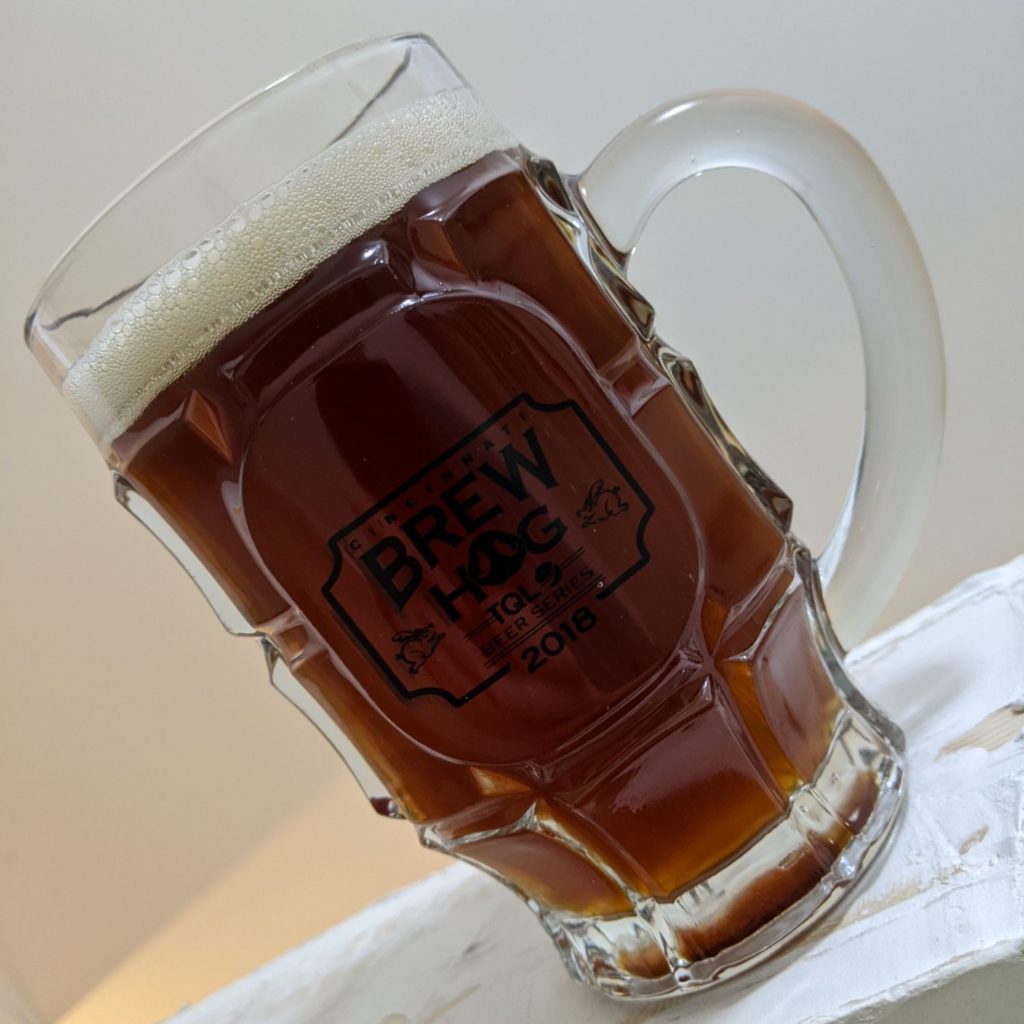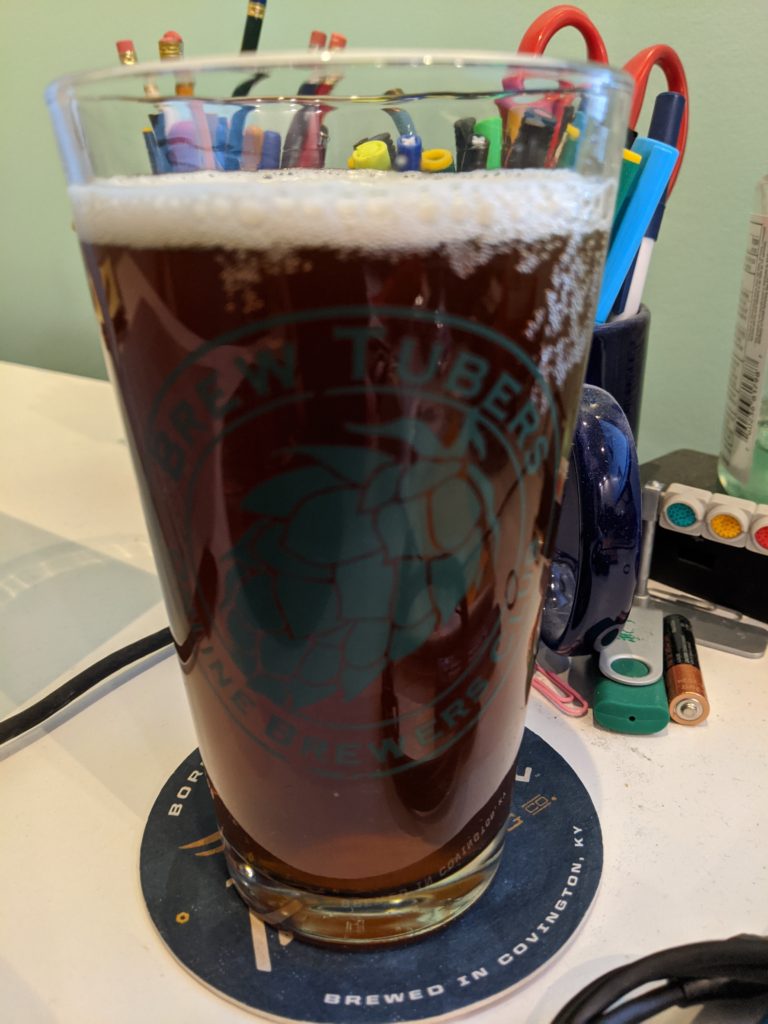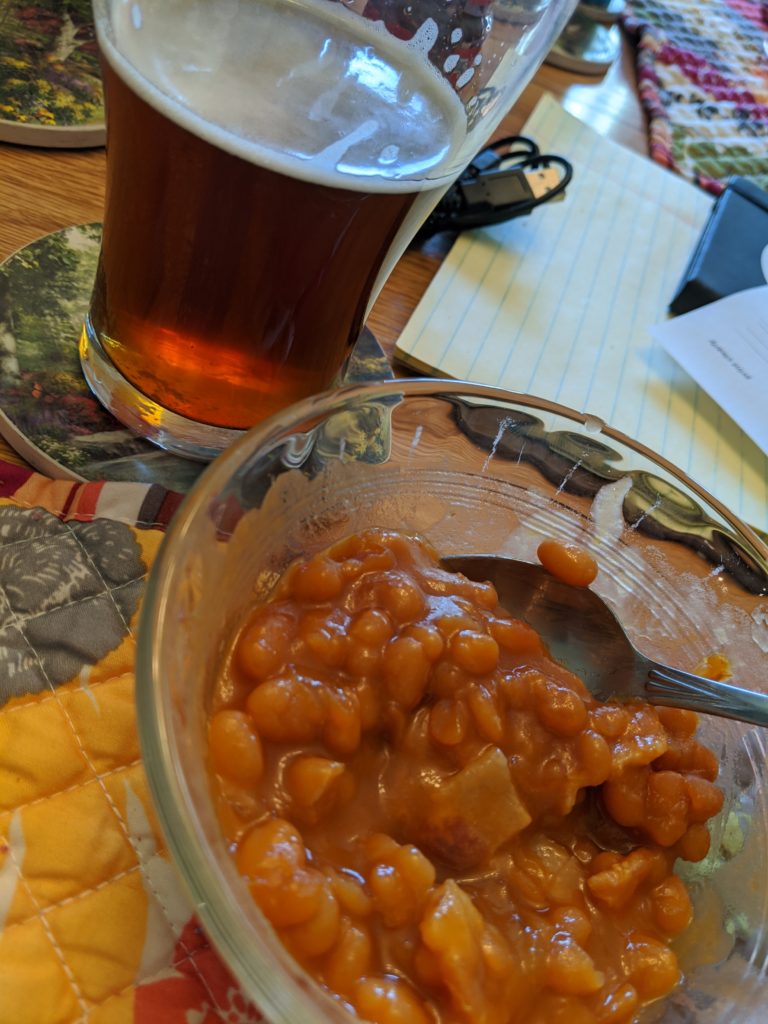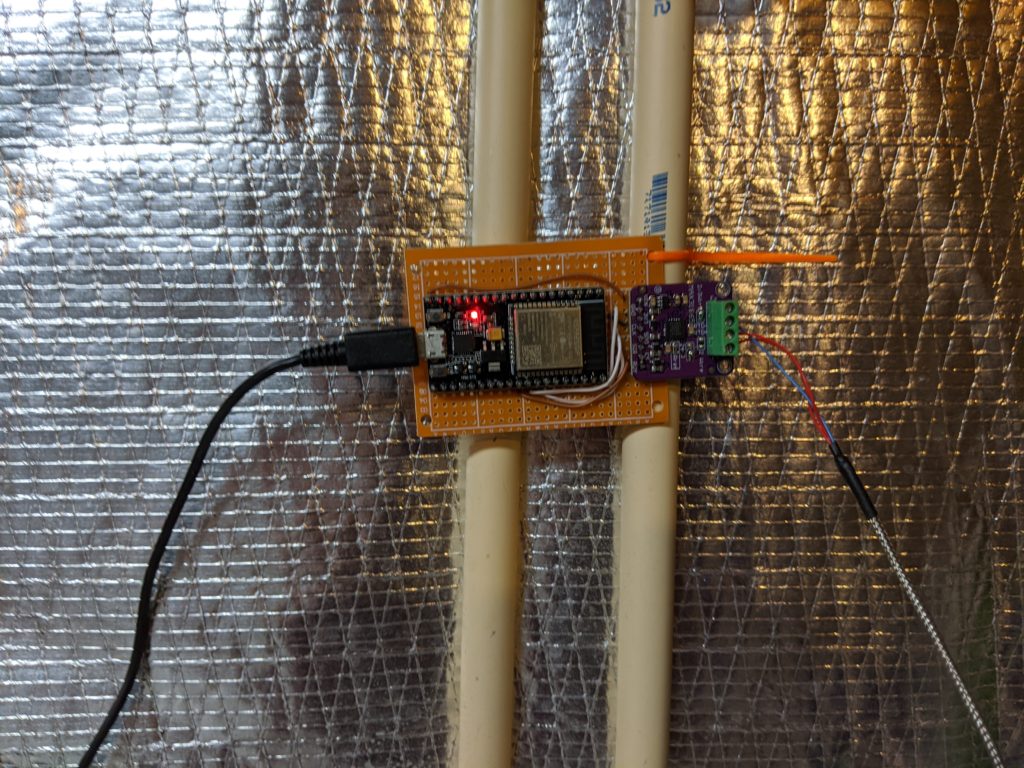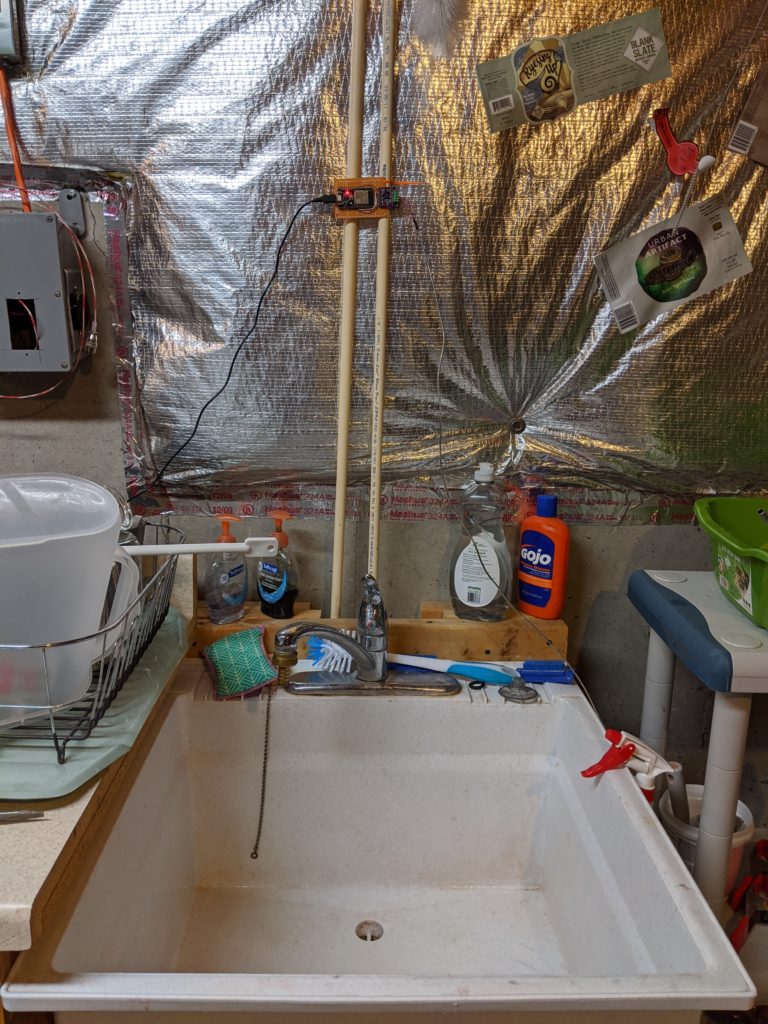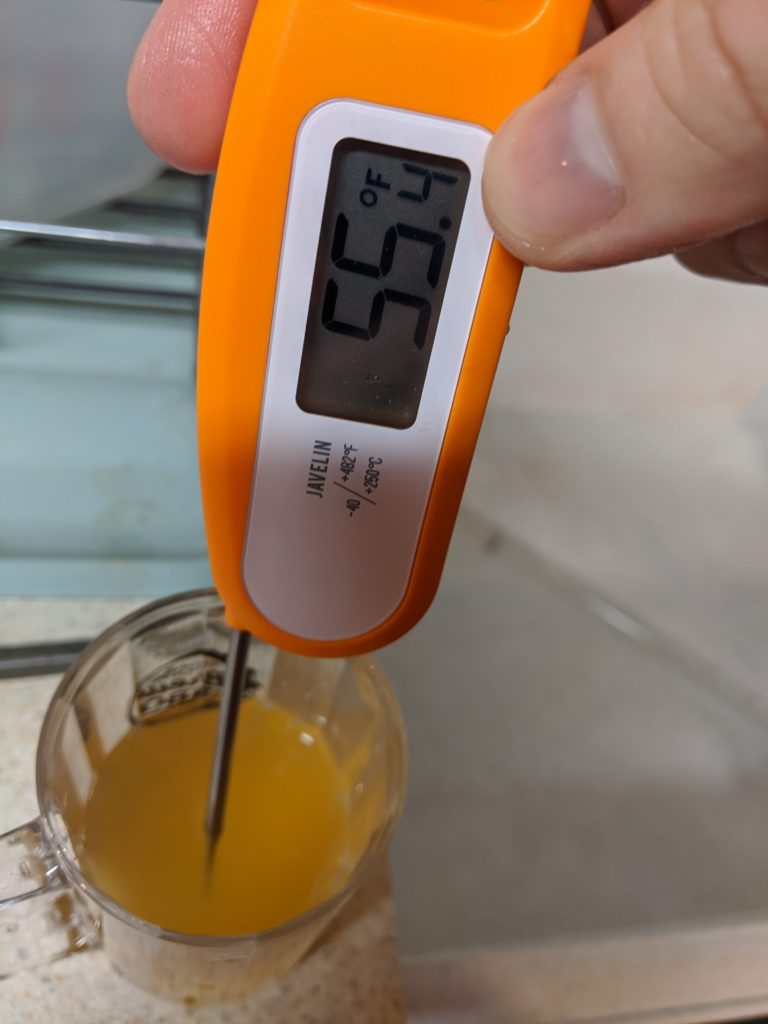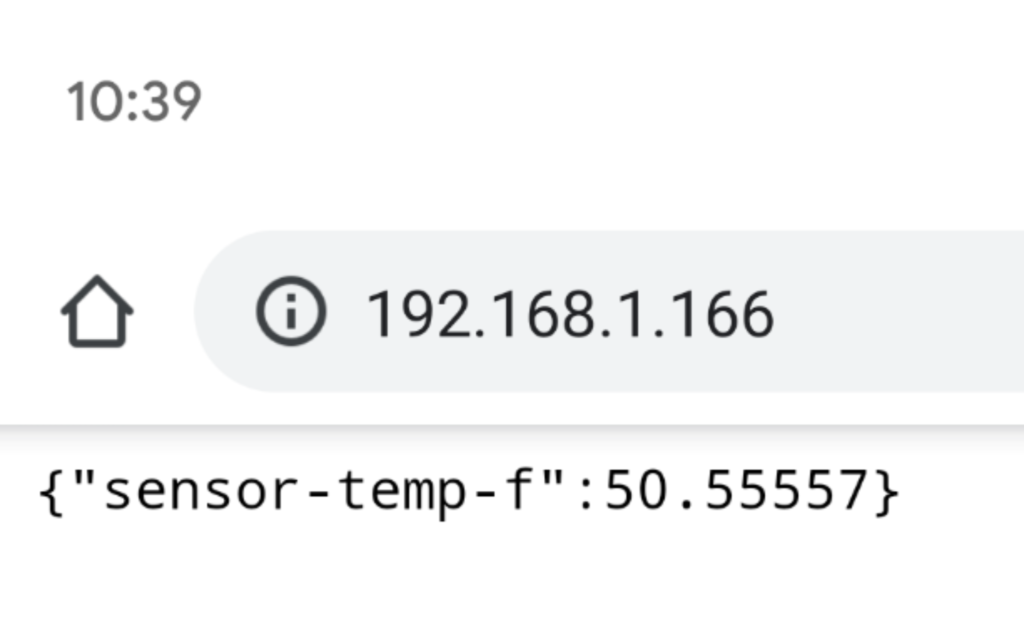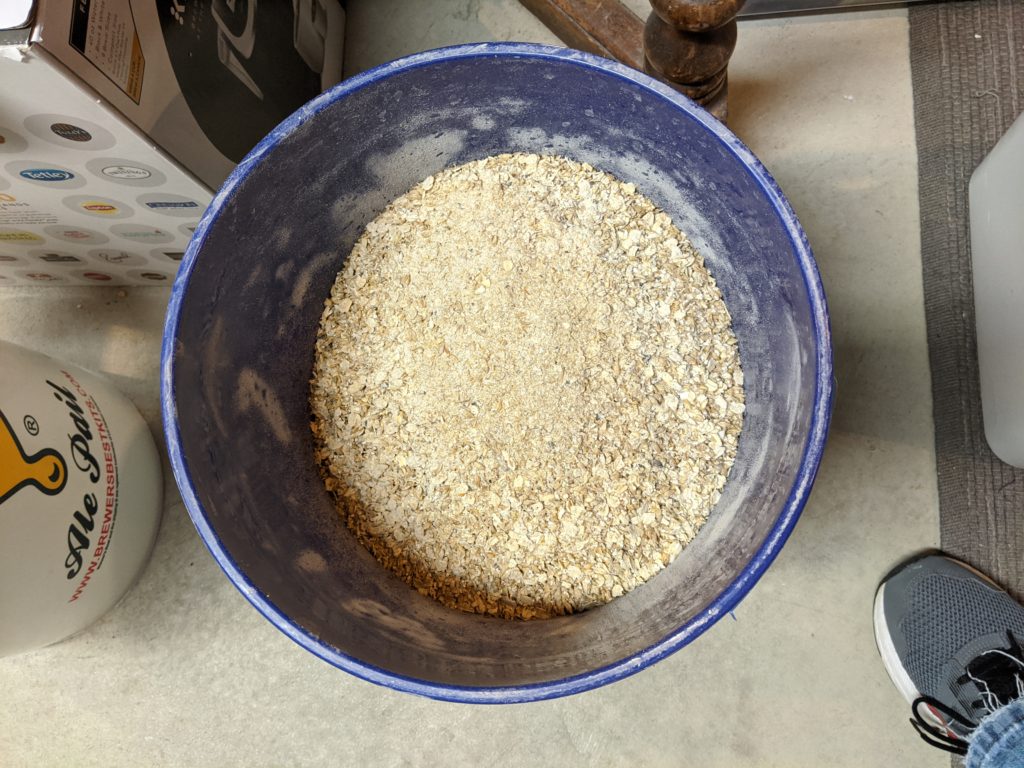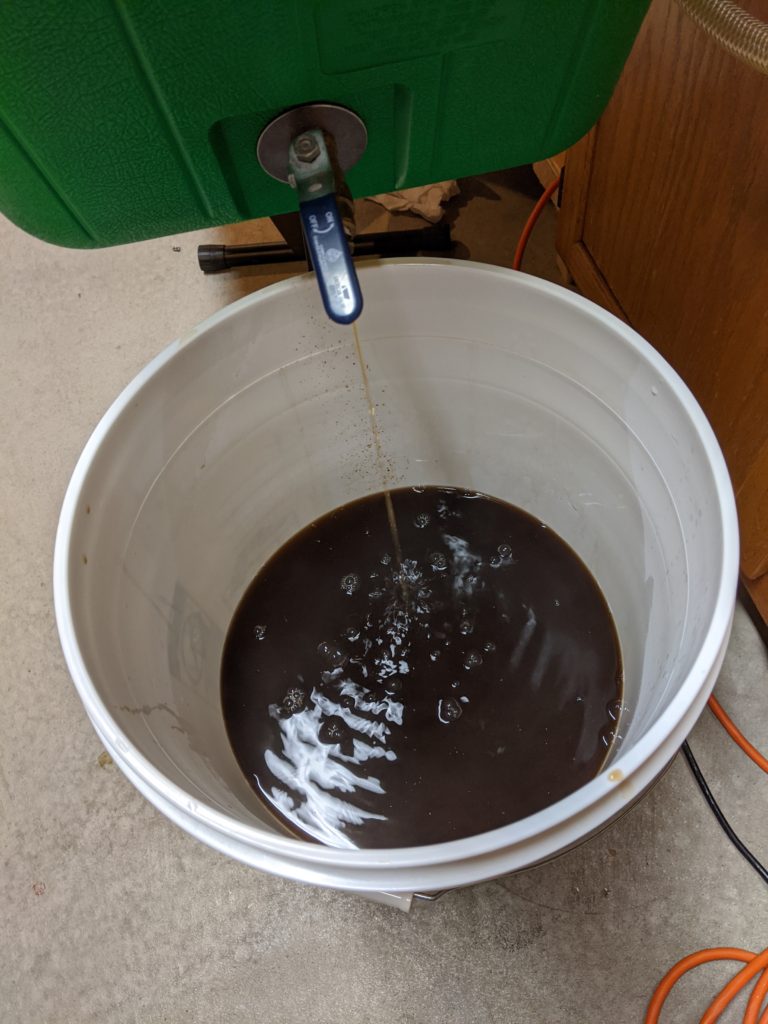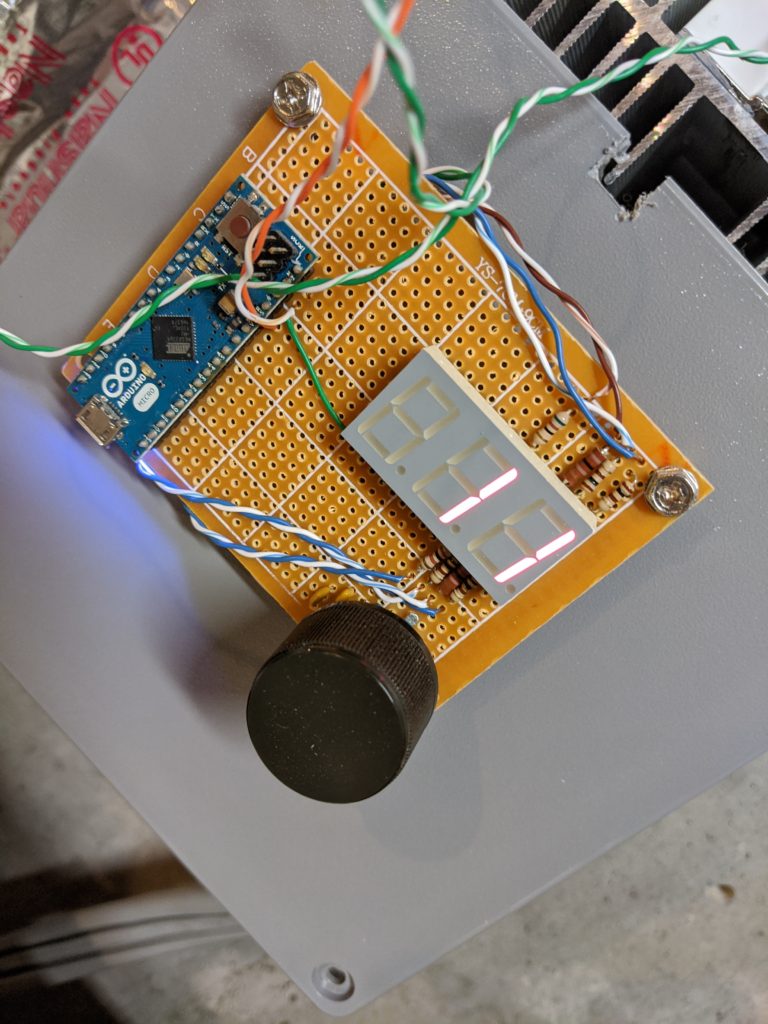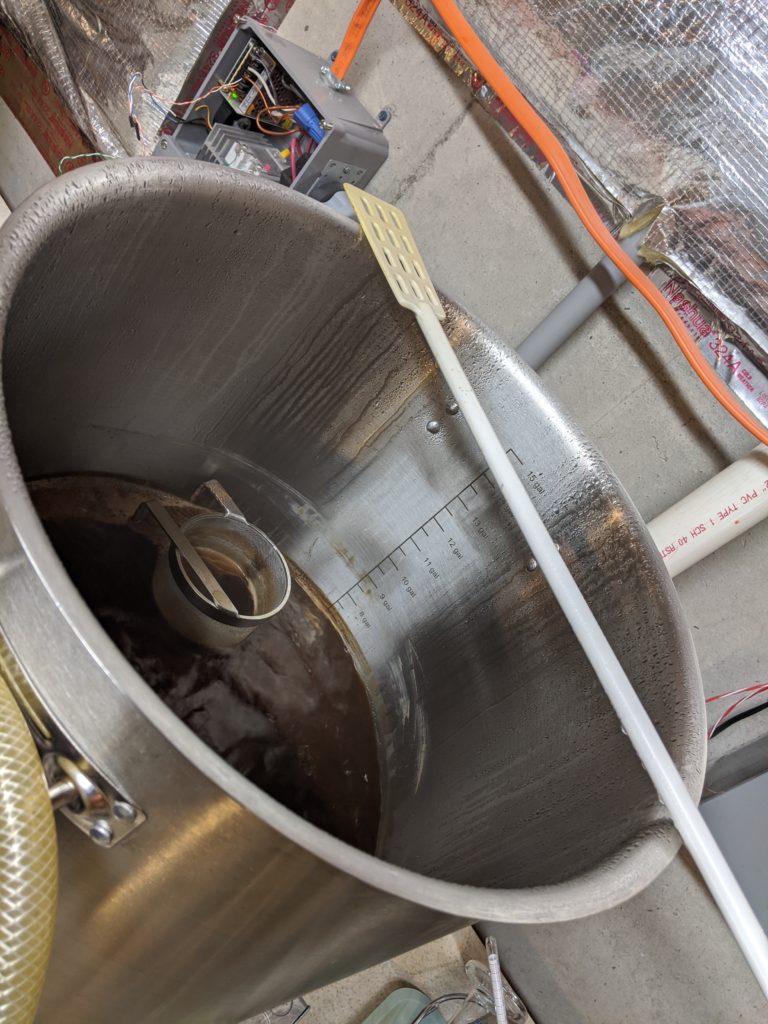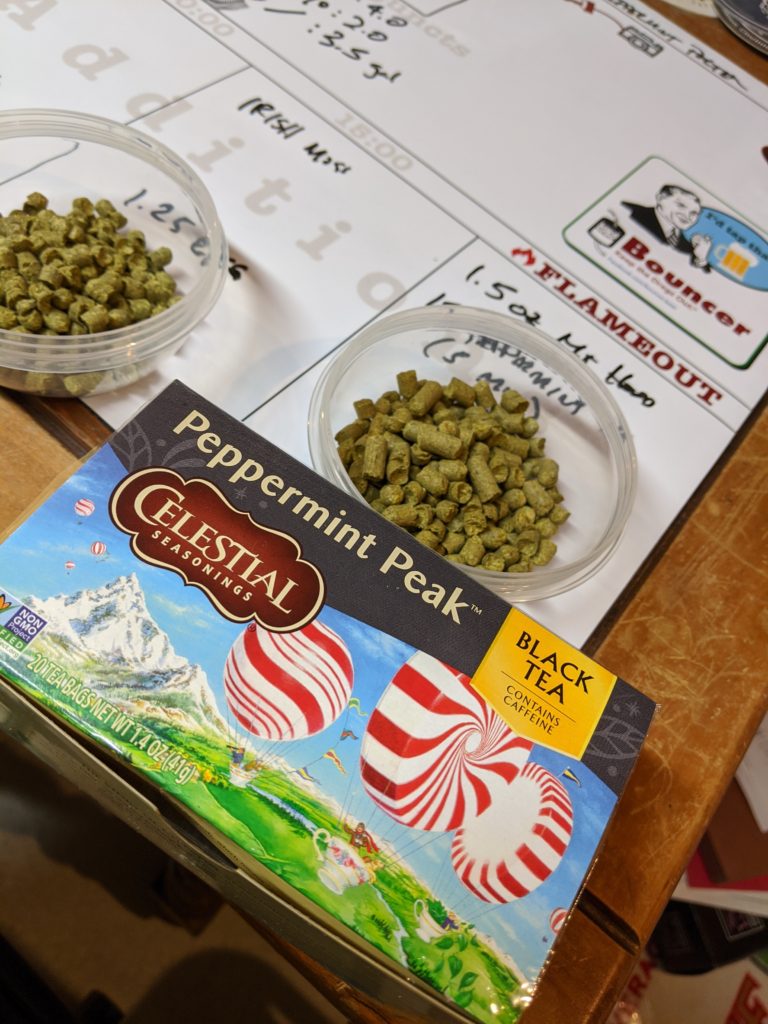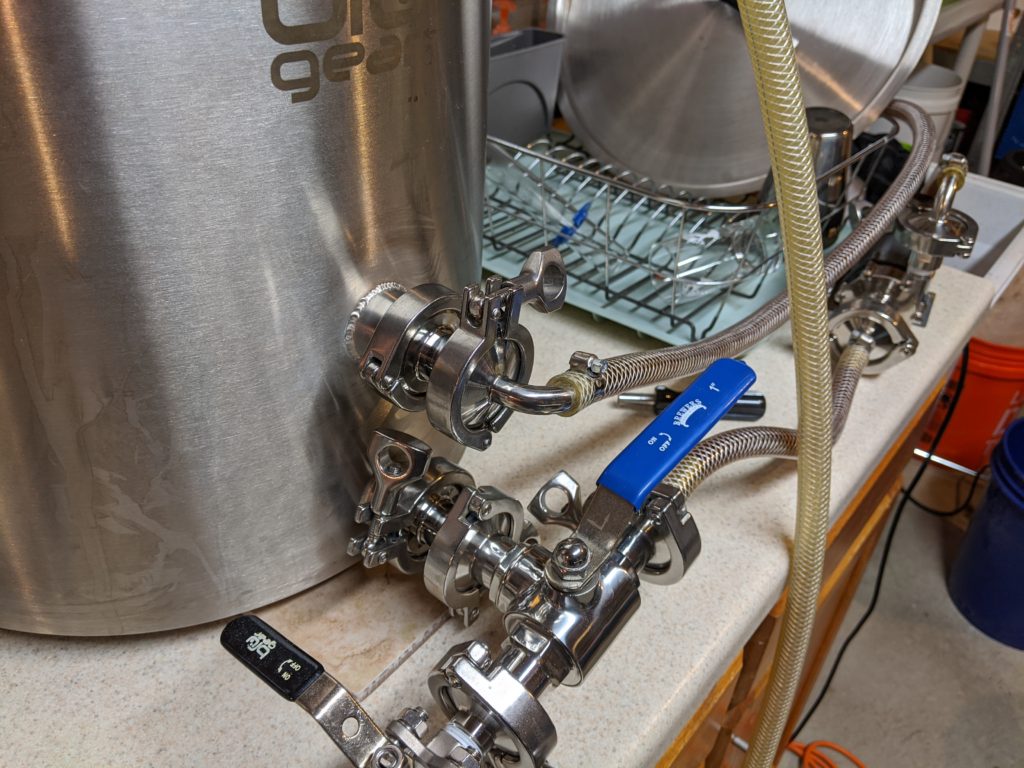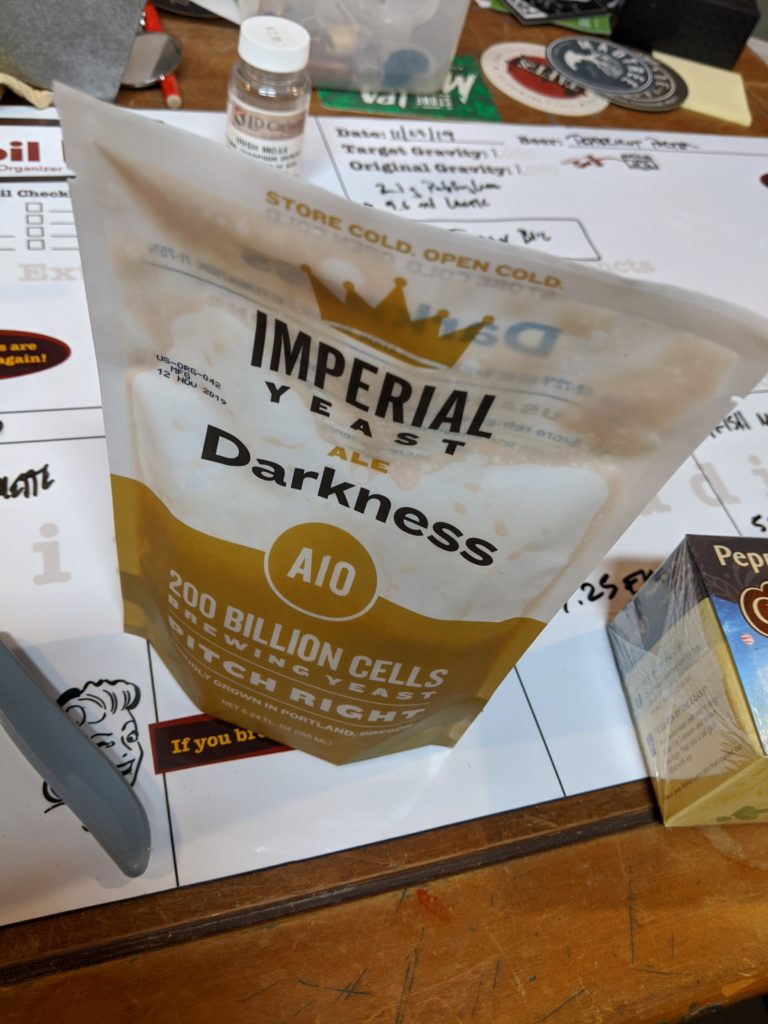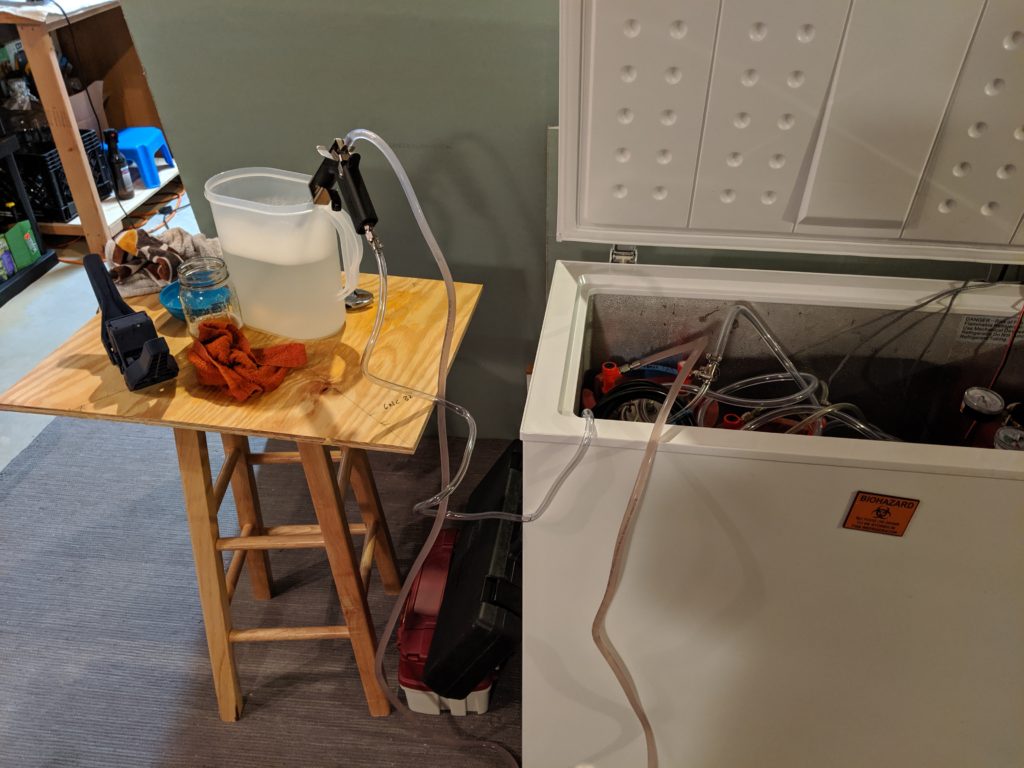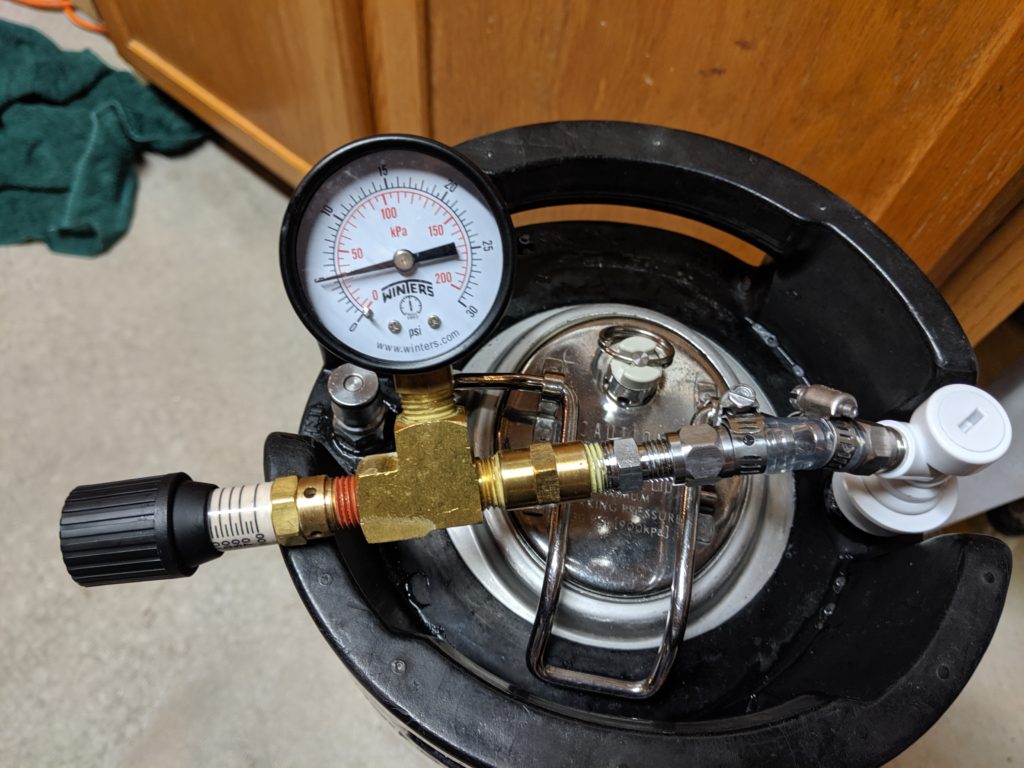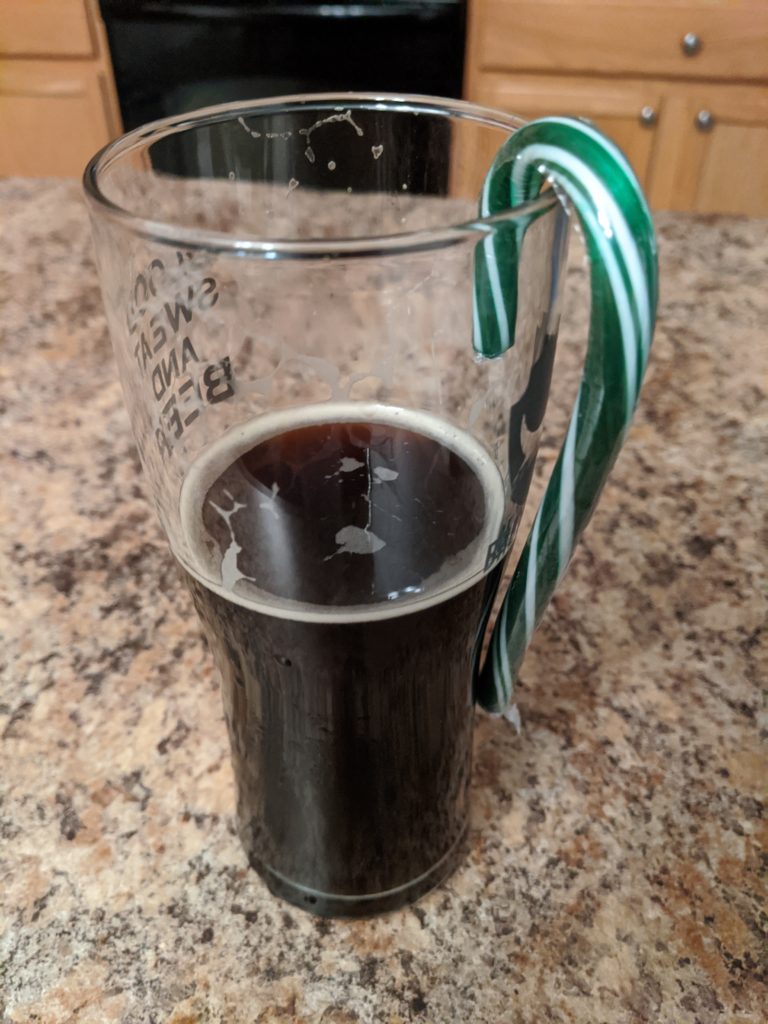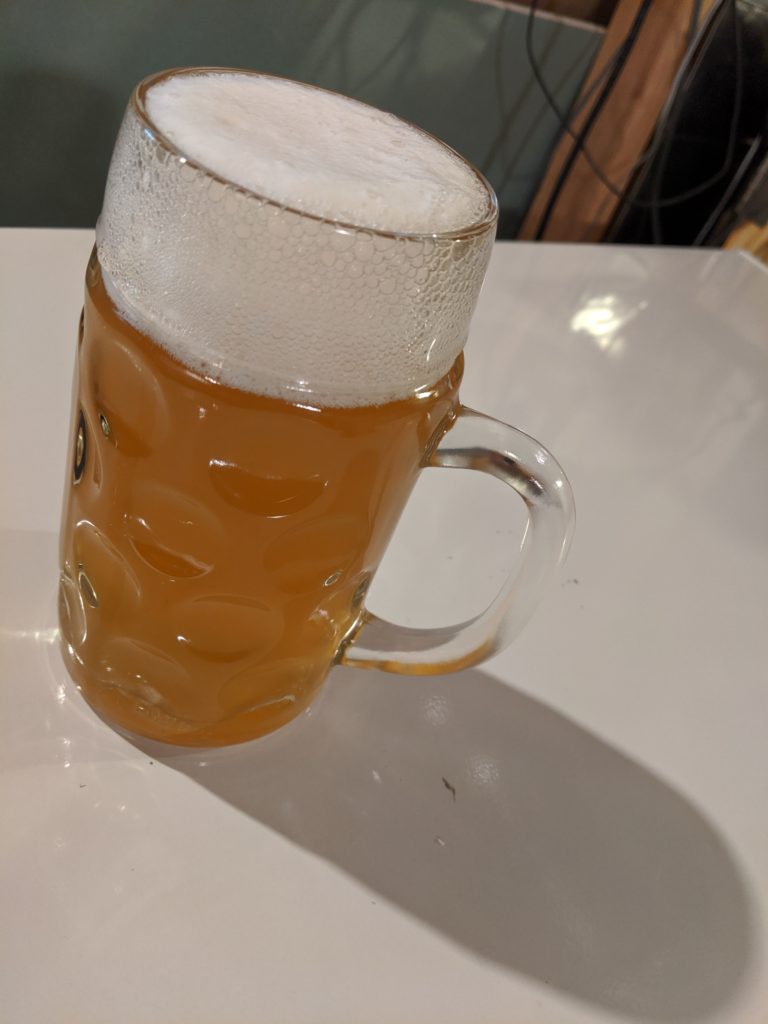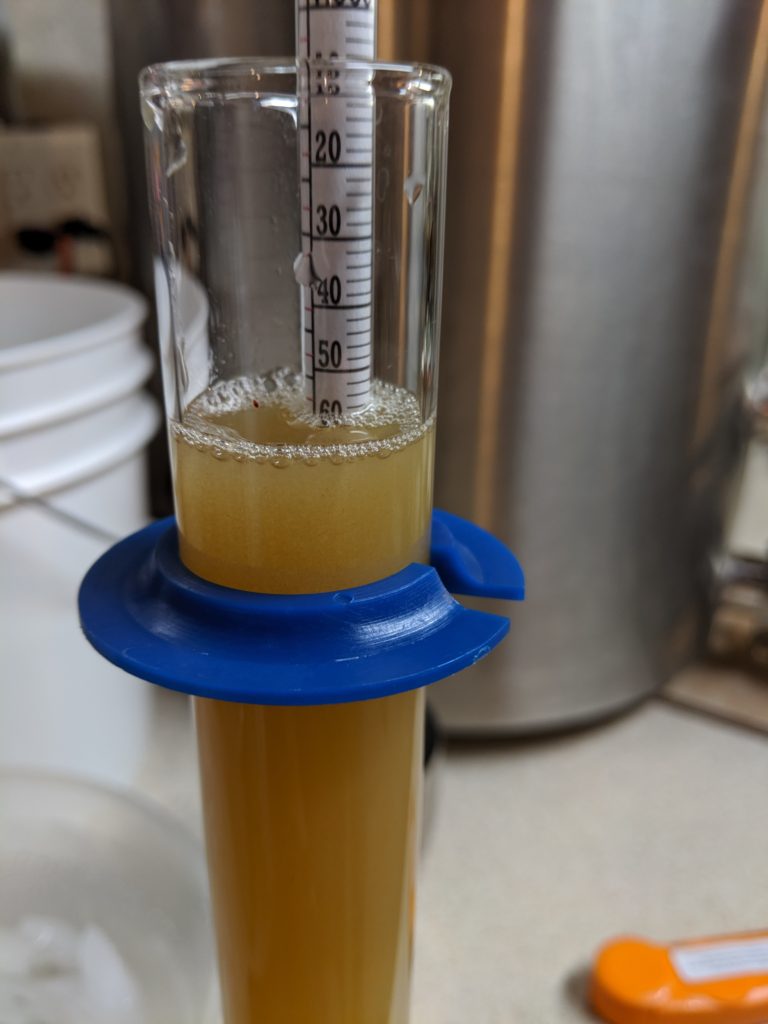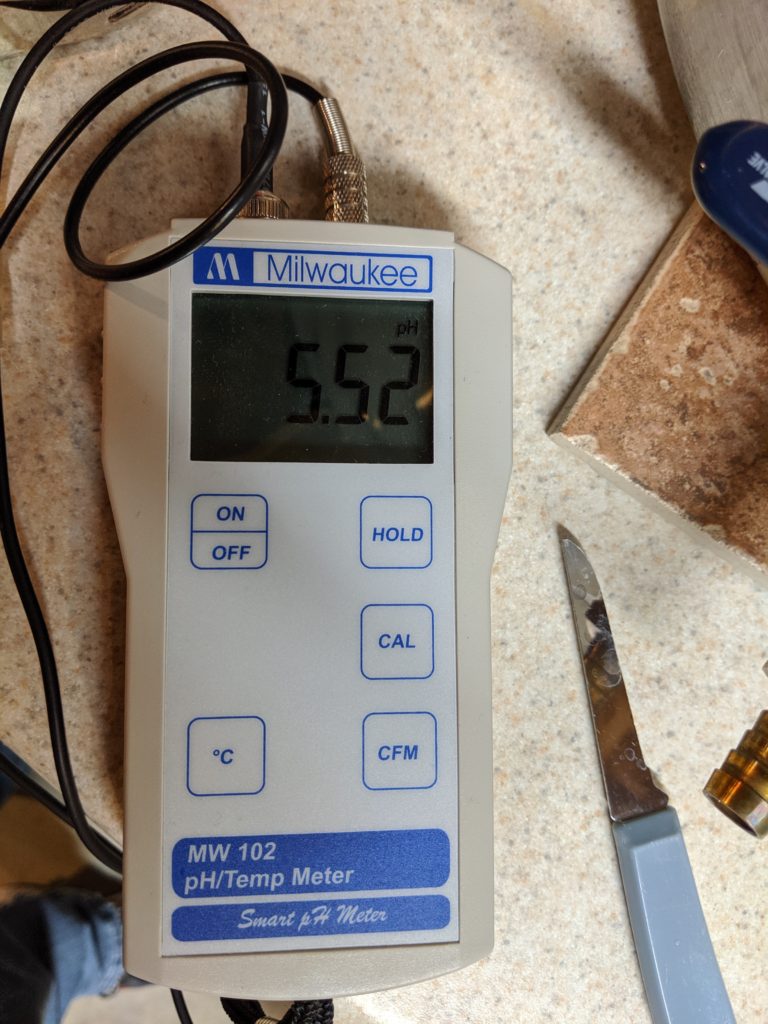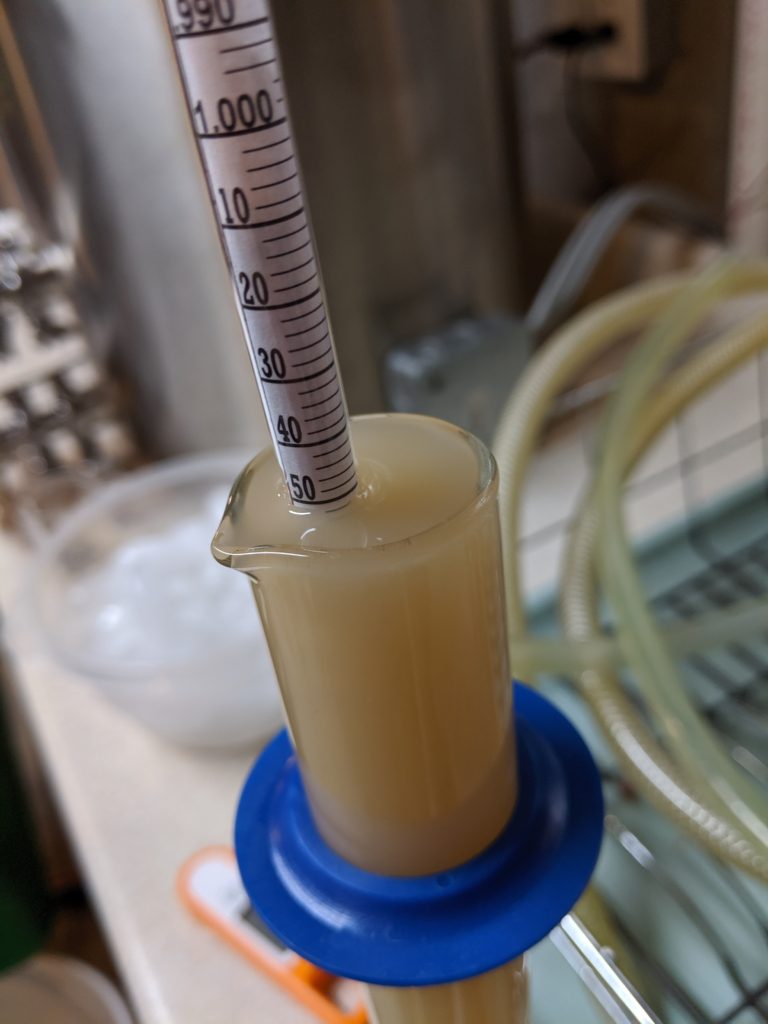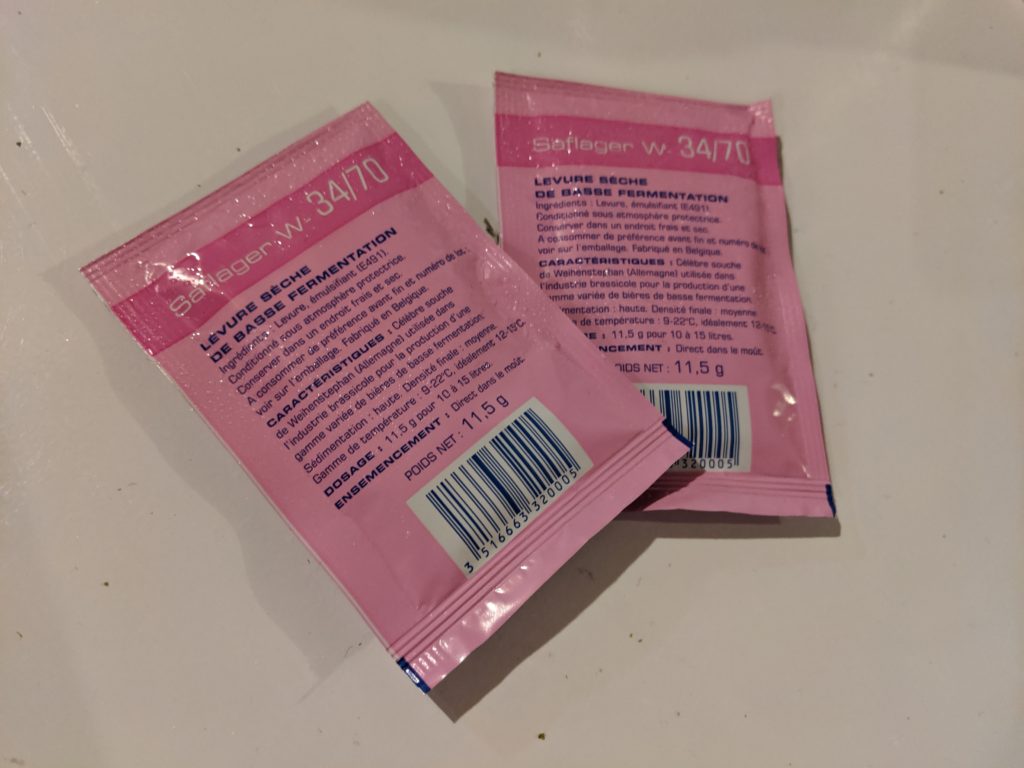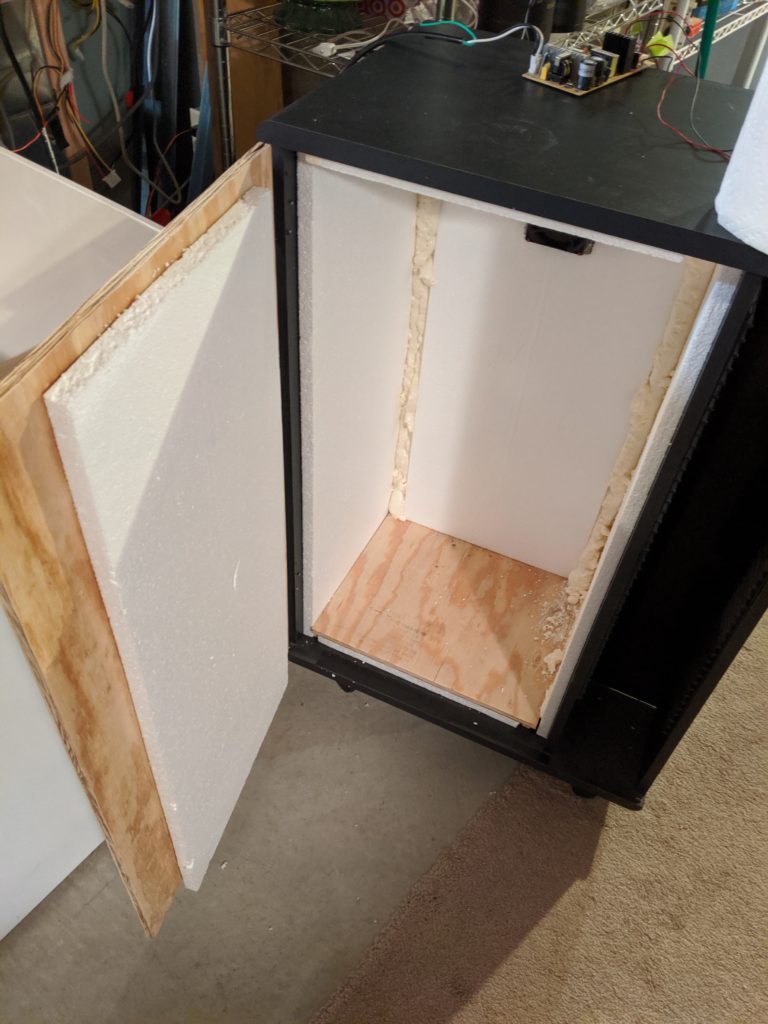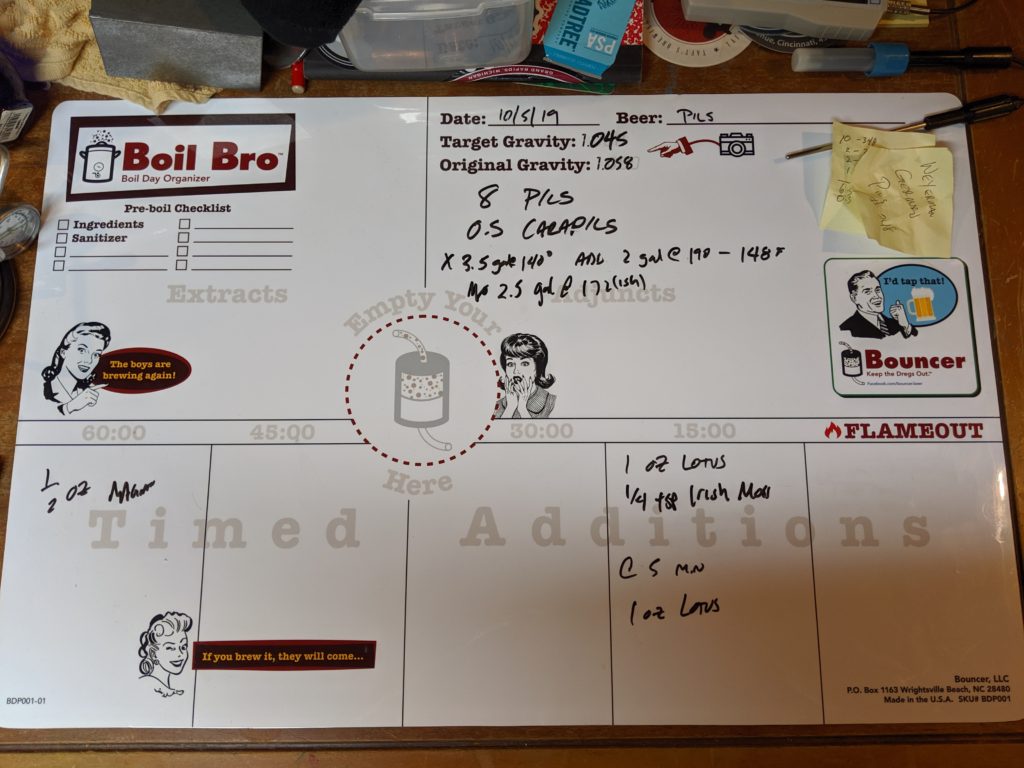Brewing
Brew The Book 2: Northern English Brown Brew Day
For my second brew of the Brew The Book challenge, I brewed a Northern English Brown Ale. I wanted something that was interesting, and I’ve never brewed a brown ale before, so I thought it was a nice start. After reading the descriptions in the book and on the old BJCP guidelines, I decided on the Northern English Brown.
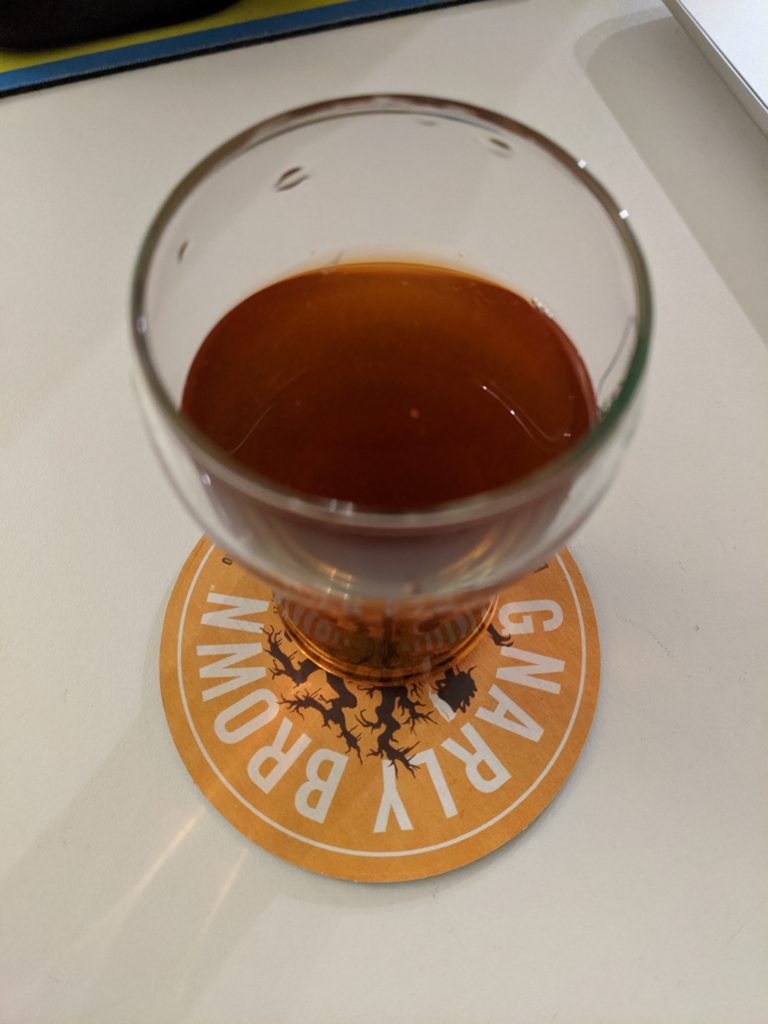
Sidebar: Brown Ales and BJCP Guidelines.
When I started brewing and learned about the BJCP guidelines, the guidelines in use were from 2008 and listed the Northern English Brown and Southern English Brown as separate sub-styles of the English Brown Ale category (along with Mild). American Brown Ale was, of course, separate.
At the time, Southern (11B) is listed as malty-sweet with very low to no hop aroma with low hop bitterness and a ‘low to non-existent’ hop flavor. Northern (11C) has a ‘light but appealing fresh hop aroma’ that may be present, and the flavor has a medium to medium low hop bitterness and an even malt-hop balance.
Fast-forward to the BJCP 2015 Style Guidelines. Dark mild, British Brown Ale, and English Porter are moved around. The British Brown Ale sub-category seems to mostly mimic the old Northern English Brown, and it seems that a Southern English Brown would have to either go into the British Mild or Historical – London Brown Ale.
Recipe Development
Starting with the book’s guidelines, I used the following grain
9 lb Maris Otter
0.5 lb Special Roast
0.5 lb Victory
0.5 lb Caramel 40
0.25 lb Chocolate Malt
Hops were simple, 1.5 East Kent Goldings at 60 minutes and 0.5 EKG at 5 minutes. I used 1/4 tsp of Irish moss at 15, and used Imperial Pub yeast.
Brew Day
Brew day began early since I was also smoking a pork shoulder.
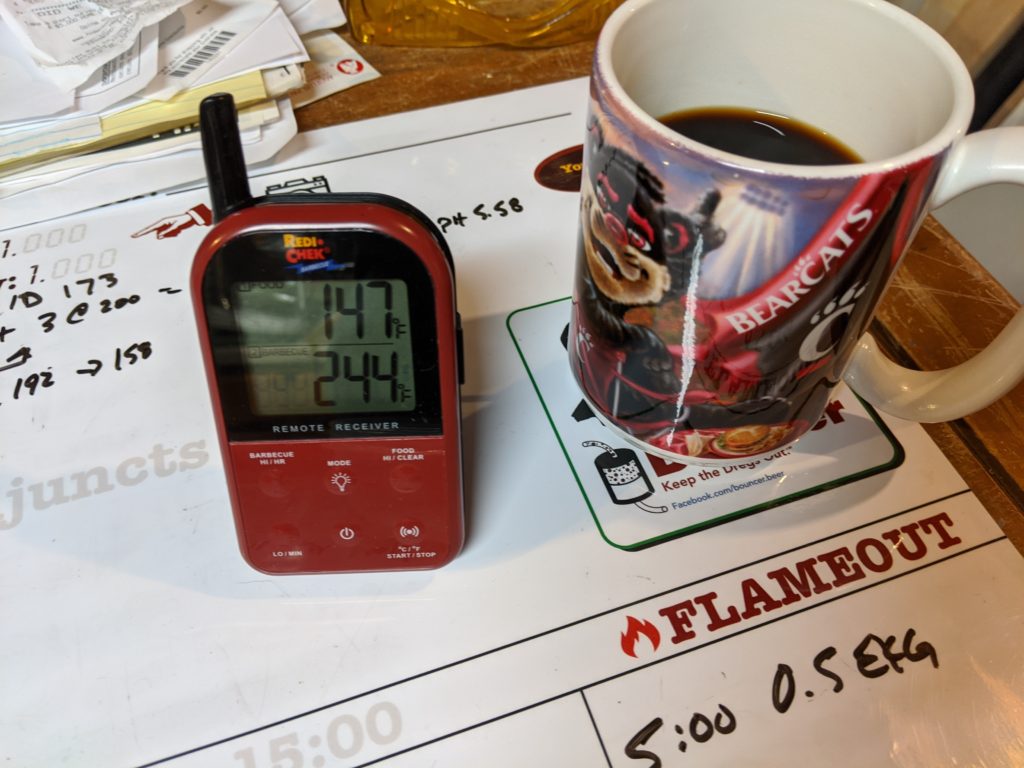
I did have a problem with my mash temp – my initial strike (with 173F strike water) was coming out low and my initial temp was in the 130s. I heated up more water and brought it up to around 149F and started a timer. From then on, there was nothing (fortunately) notable. I didn’t use a hop screen/filter in the boil this time (for the first time in a very long time).
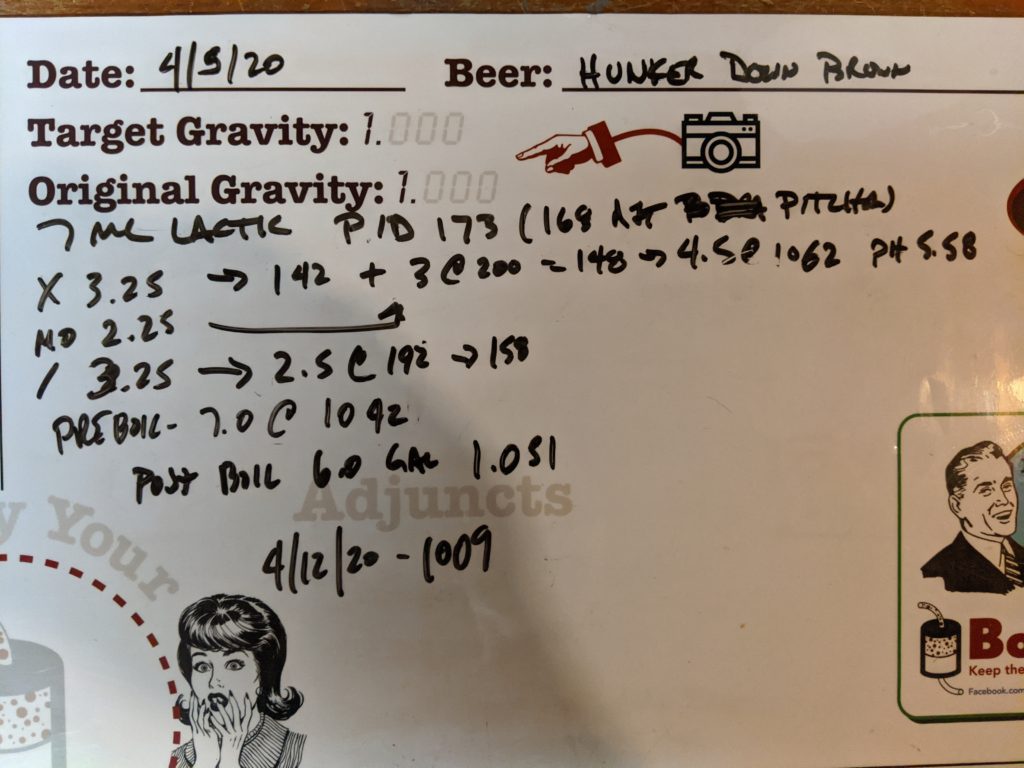
OG: 1.051 (goal 1.052), FG: 1.009 (expected 1.014??? WTF BeerSmith???), 5.5% ABV.
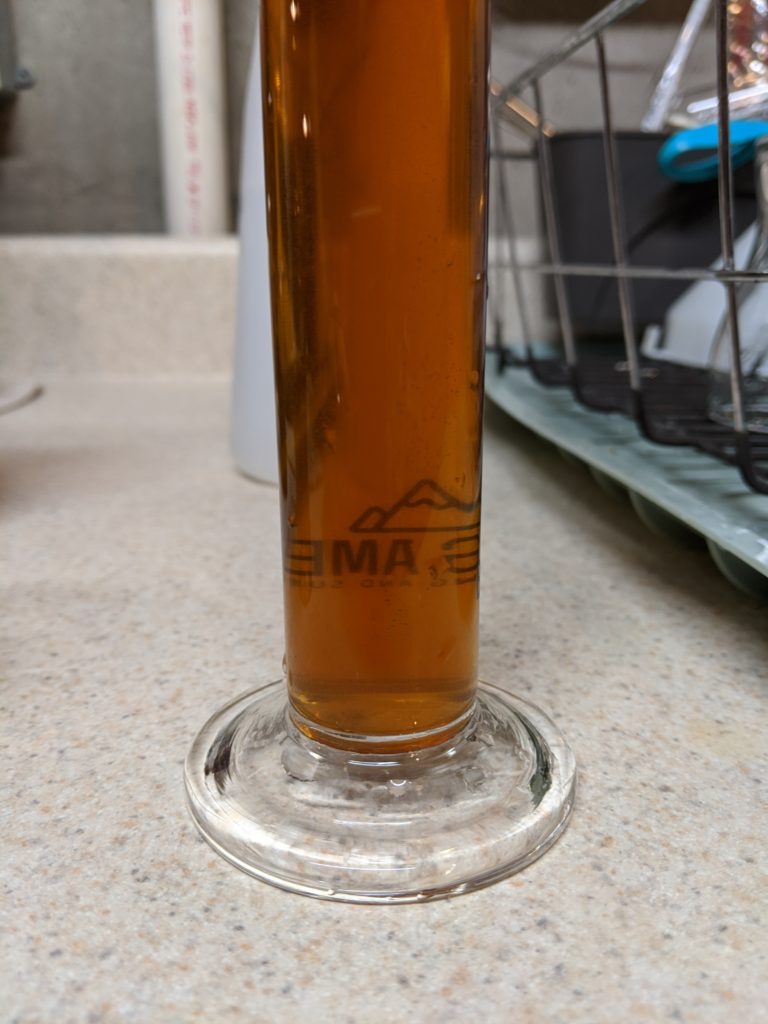
This fermented for a few days, I gave it two weeks and racked it to a keg. It’s a little sweet toasty with caramel and toffee notes. It’s pretty clear (particularly when using no gelatin in the keg). It goes well with my wife’s pork and beans (she uses canned beans but adds onions, mustard, and brown sugar… all by taste).
Cheers!
Brewtubers Yeast Experiment Brew Day
Brewtubers is an online club of homebrewers that use YouTube. I have only a few things on YouTube and have visions of more grandeur than I currently have.
Anyway, at the persuasion of Exit 12 Brewing, I jumped into this thinking “I’ll want to brew an IPA sometime around early February.” I was correct, but I promptly forgot about it in favor of a kveick white IPA. So I was brewing this at the last second.
I selected “Unicorn Dust” – Imperial A20 Citrus / WLP644 Saccromyces “Brux Trois”. According to White Labs, I might see a pellicle, but they’ve done some sequencing and determined that it is a saccromyces variant. It is diastaticus-positive, which is a concern, but it shouldn’t be a major concern since I keg and the bottles won’t be sitting around for too long.
The premise of this experiment is to try to control as many factors as possible – distilled water, specific water additions (thank God I happen to have calcium chloride, I forgot to make sure I did when buying stuff) measuring hops to IBUs instead of ounces, and ensuring the OGs match.
The base recipe is here. I didn’t make any adjustments to the malts – based on my inputting them into my system setup on BeerSmith, they came out to an OG of 1.066. I did make adjustments to the hops – and made the most accurate hop measurements I ever have…
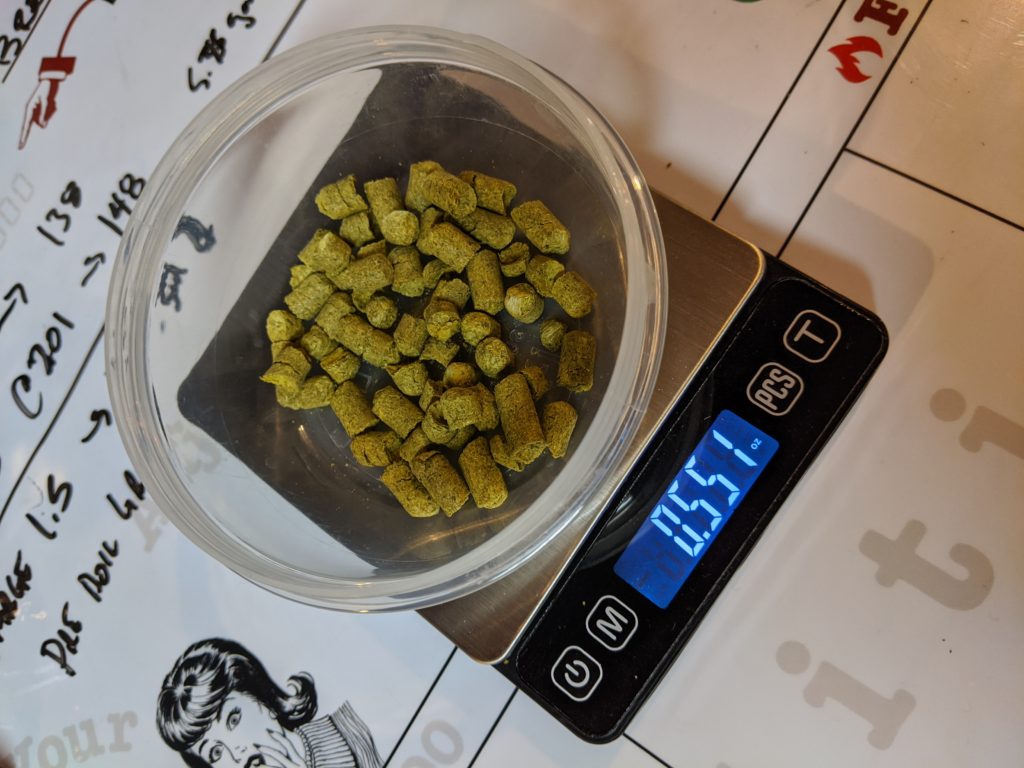
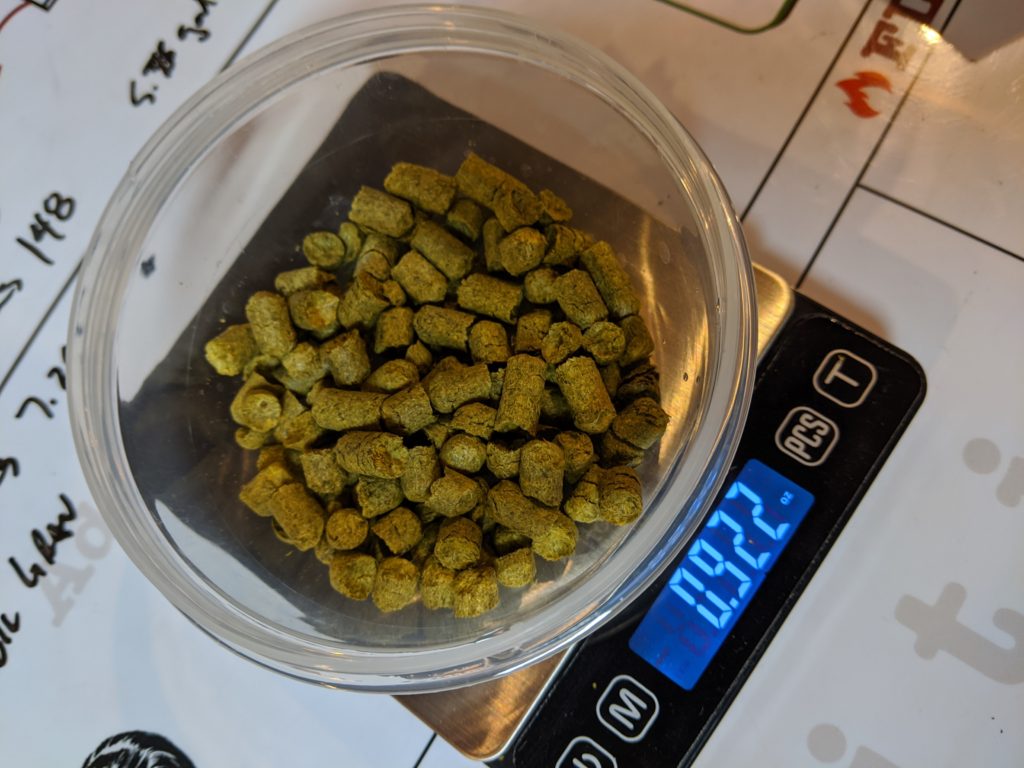
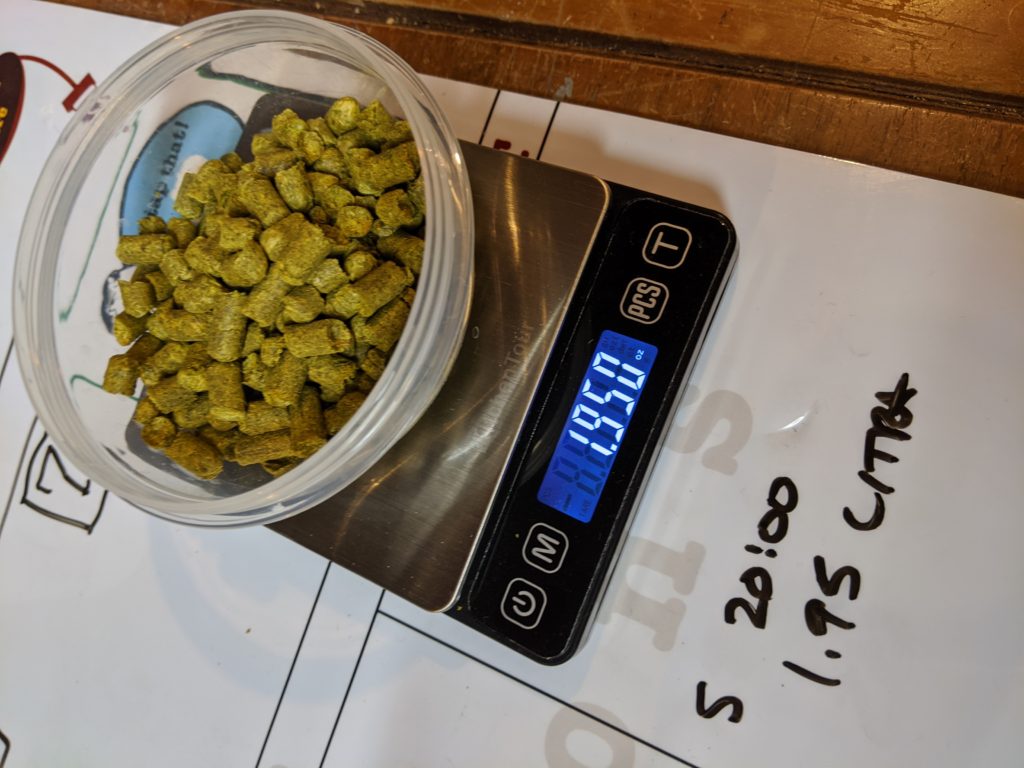
One of the things I was wondering about was the mash pH. I’m used to my water, which goes between pH 75 and 8.5, so I normally use lactic acid. Part of the control of this is using distilled water and 4 grams of gypsum and 5 grams of calcium chloride as the brewing liquor, and a small amount of acid malt. I’ve never used acid malt, so I put the small amount of malt into a separate bag at my LHBS and about halfway through the milling the grain, I dumped it into the mill. The pH didn’t look too bad…
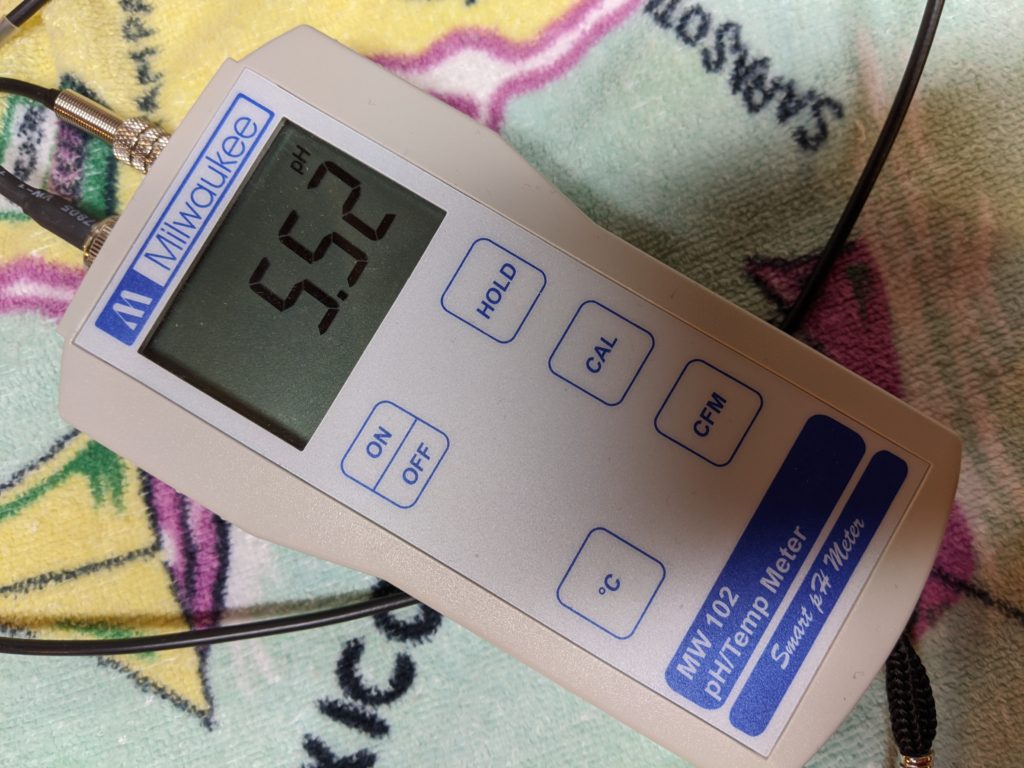
After the 20 minute steep, I went to chill the wort and see if I needed to add some distilled water or malt extract by immediately pulling off some wort to test. I realized it was at 68F, so I immediately transferred the wort to the carboy… which was ultimately 61F. The yeast prefers it to be warmer, 67-80. It did warm to the mid-70s over the next few days of fermentation.
This was kegged using my closed-kegging method, which is shown in the video below.
Evaluation
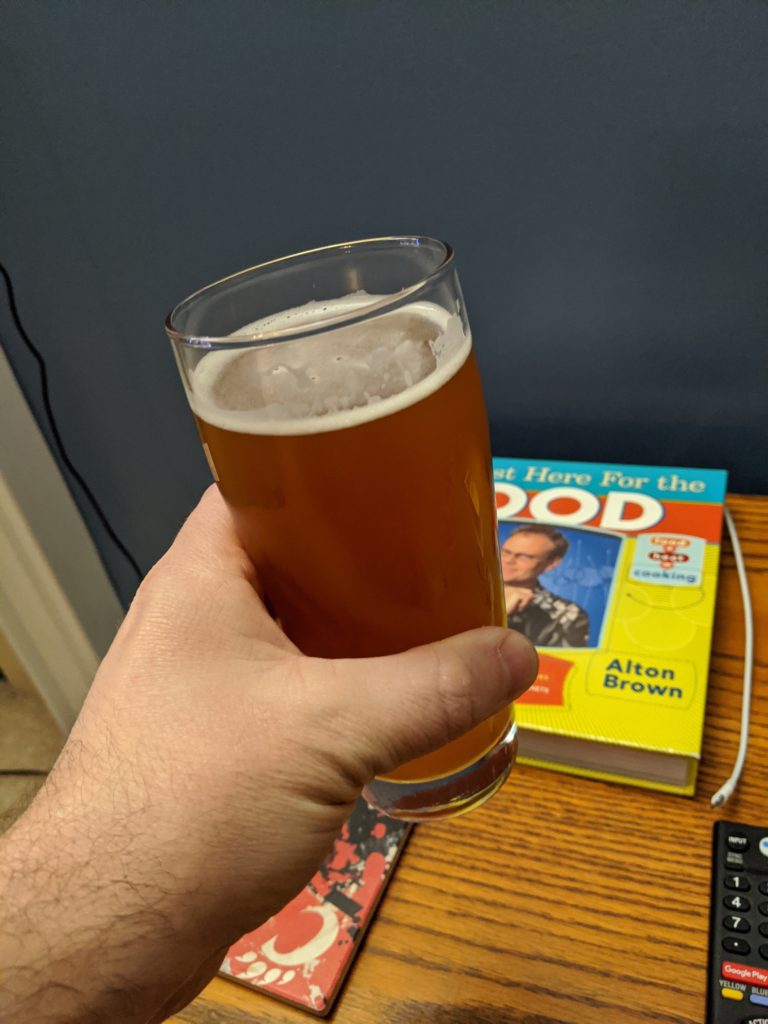
Appearance: Hazy copper color with a fine off-white head. It has cleared a little since being in the keg.
Aroma: Banana and orange flesh. As the keg aged, I noticed some peach coming out.
Taste: Orange flesh, banana, and some peach. Moderately bitter.
Mouthfeel: Medium mouthfeel with light non-lingering bitterness. Medium carbonation appropriate for style. Juicy orange flavors linger.
Overall: This is a tasty and juicy beer, although the bitterness is very low for the style (it should be west coast IPA).
Cheers!
Brew The Book 1: German Pilsner Brew Day
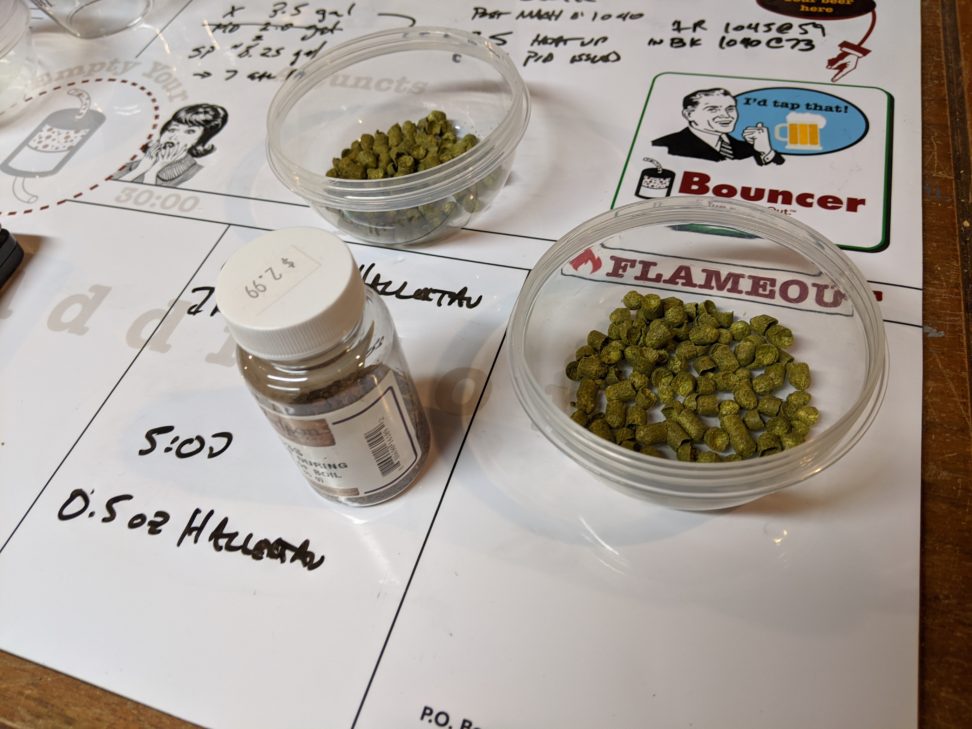
The first of the four from the Brew The Book series is a German Pilsner. I tried to make as few changes from the book as I could, but keeping within what a German Pilsner should be – a light, dry beer with crackery malt, floral hop aroma and flavor, and a bitter finish and aftertaste. It shouldn’t be strong (the style guidelines call for a 4.4% – 5.2% ABV beer with an OG of 1.048 – 1.056 and an FG of 1.010 – 1.015.
The book calls for 10.8 pounds of malt – I used 10 pounds of German Pilsner malt since my system would have yielded a significantly higher OG than the recipe calls for and also require more hop adjustments. I used Horizon hops for bittering instead of Perle, and adjusted to the same IBUs as the original recipe (~28 IBU). The final change was using two rehydrated packets of Saflager W34/70, which is supposedly the same yeast as the other recommended yeasts – WY2124/Bohemian Lager and WLP830/German Lager (the book recommends Saflager S-23 is the same as WY2206/Bavarian Lager and WLP820/Oktoberfest Lager).
During the brewday I mostly hit my numbers. The pre-boil and post-boil numbers seemed off until I double-checked and they were just about right on (my OG ended at 1.048, the expected was 1.049. This was nice since my mash was a little on the cool side (146F or so) and after I initially added a gallon that was supposed to be at 190 and saw no change, I realized there’s something wrong with my PID controller connection.
Everything else on the wort production side went as planned – in fact, the only things that generated a 🤬 or 🤬🤬 involved water (I spilled some while lautering).
One of my concerns after my last lager is getting a fruity mess – that lager still has some fruitiness that is likely some yeast esters. So I wanted to keep the fermentation cool. And after having some success cooling that lager down (and heating up my last IPA, which used Kveik yeast). To go one step further, I decided to install a monitoring probe. I started with a pt100 temperature sensor in the bottom of a scrap piece of PVC pipe. I then connected that to an ESP32 device running Micro Python and set it up with a way to see the temperature from anywhere on my home’s network.
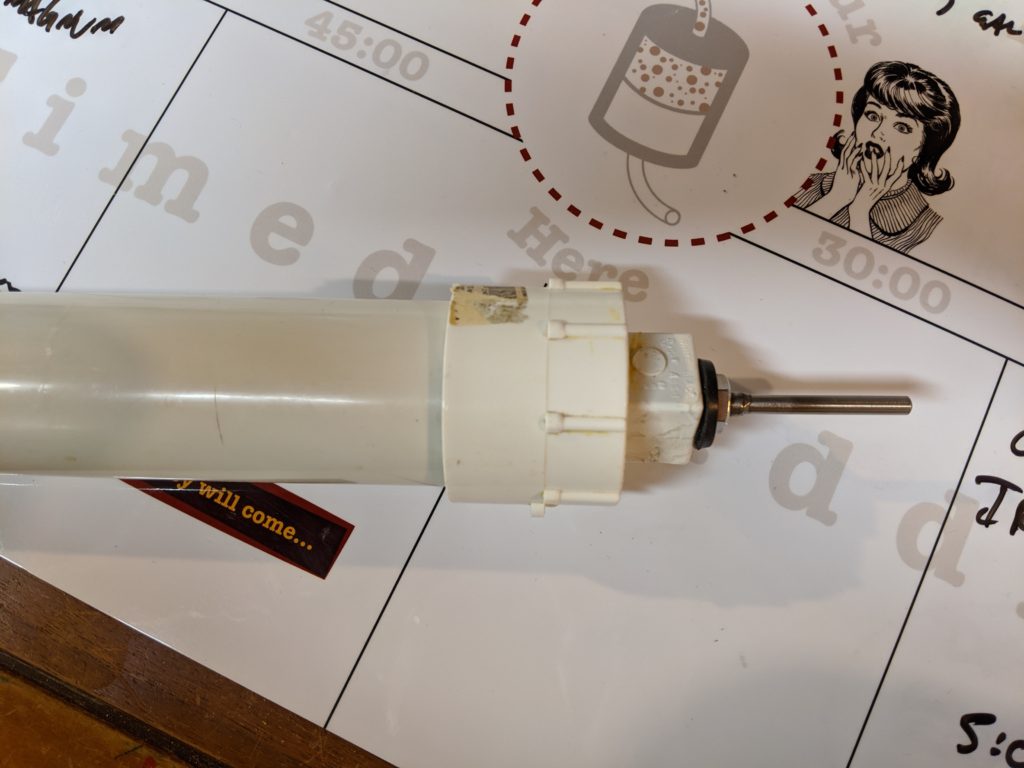
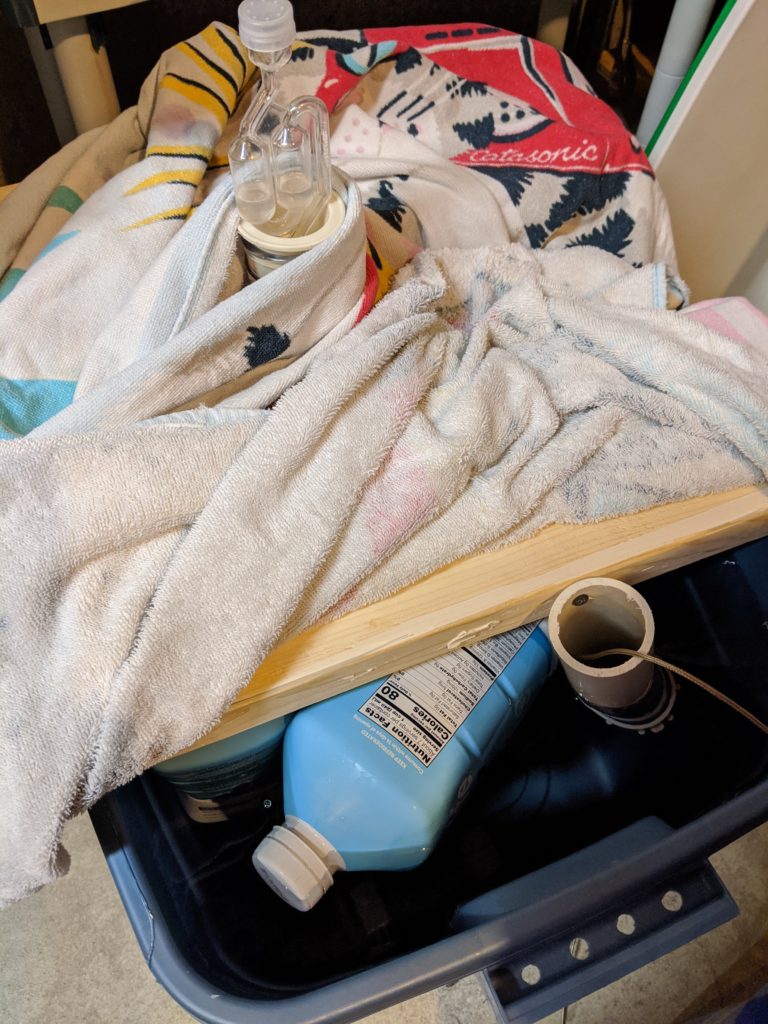
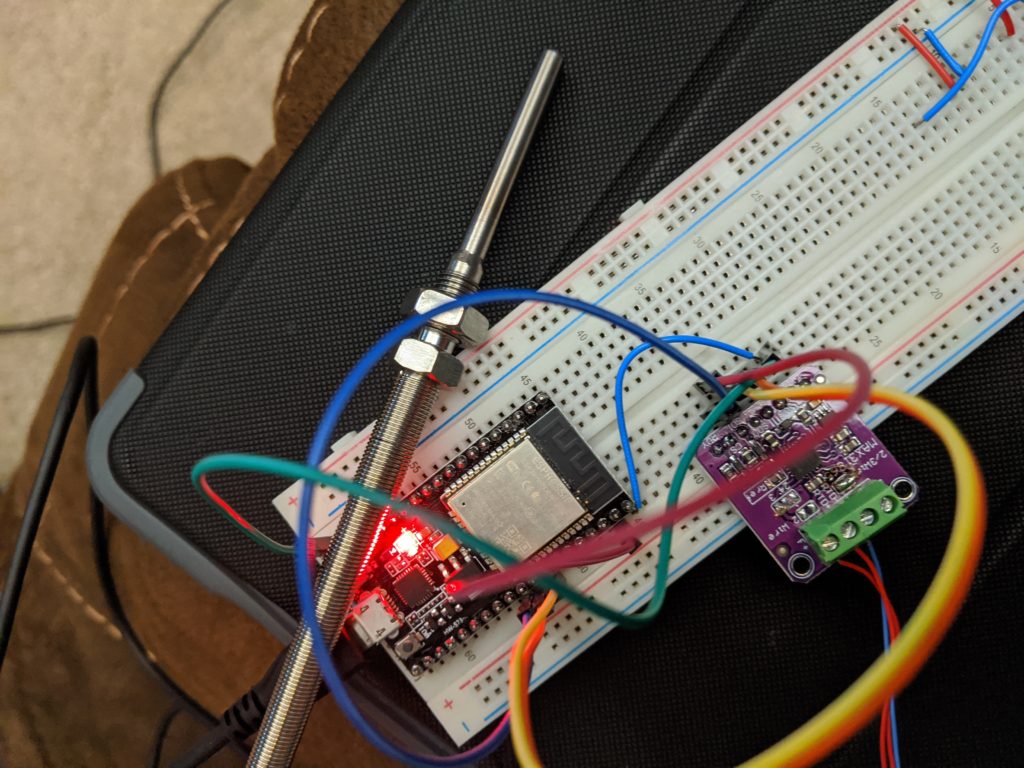
It looks better when I have it soldered up and in place… but not that good when zip-tied to a water pipe to keep it out of the way. I’ll fix that someday.
One of my concerns was how the water bath temp and fermenter temp interacted. Curiosity got me, so during the height of the fermentation, I pulled a sample from somewhere around the middle of the fermenter and compared it with the water bath…
The gallery above shows the temperature in the fermenter at 55.4F, and the water bath at 50.6 (which reads a degree high compared to the Javelin at the top of the water bath, but it may not be entirely homogeneous). The fermentation range (per Fermentis) is 54-59F, so 55 isn’t a problem, and it did start that low, so I’m hoping this means far fewer esters. 🍻
Stay tuned for the next episode!
Brew The Book: Series Intro
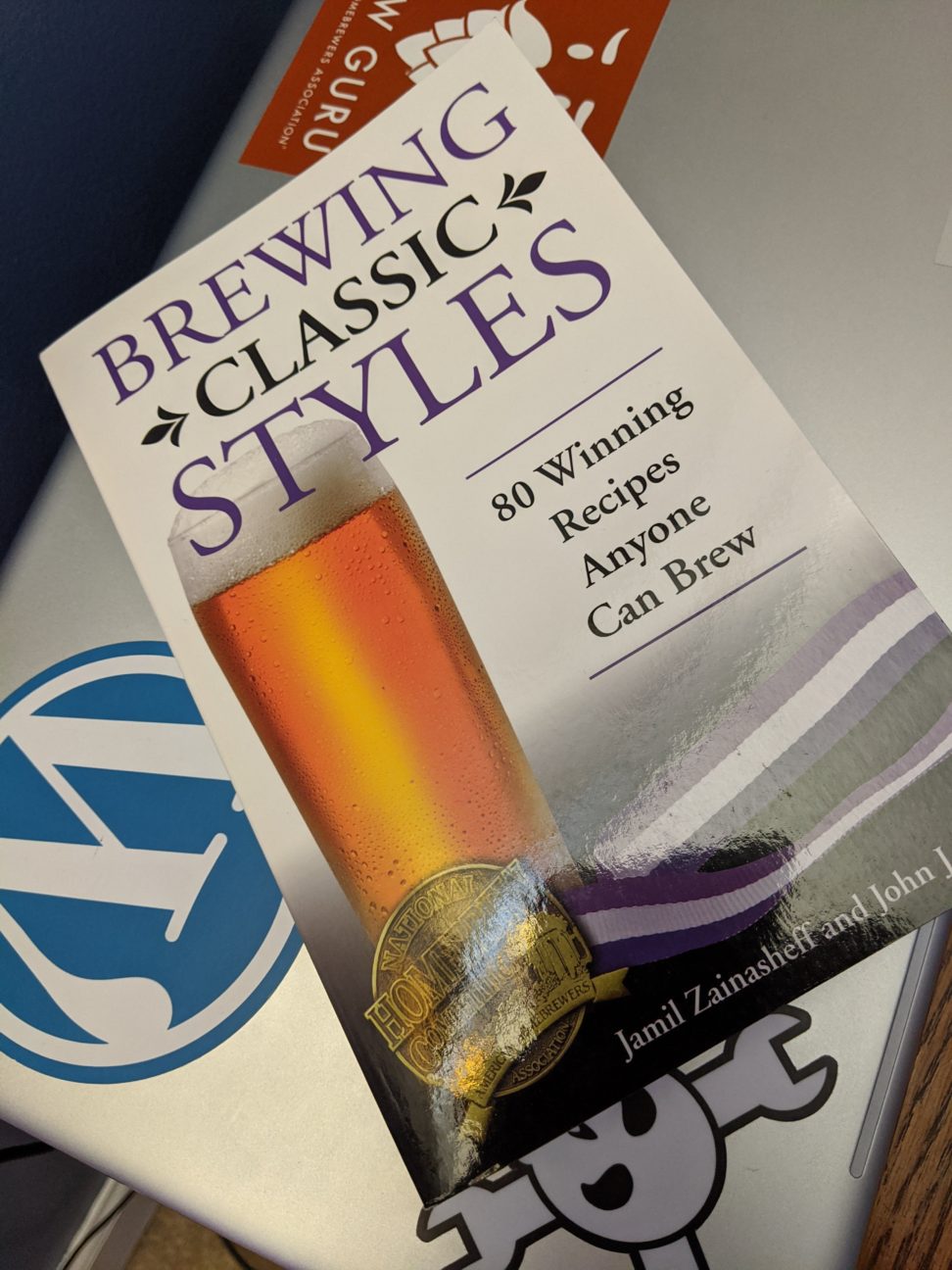
This started with a thread on Reddit. I decided to join in when I decided I wanted to make a lager and selected the German Pilsner “Myburger” from Brewing Classic Styles.
The premise of “Brew The Book” is pretty loose. There’s no set number of brews, it’s not expected to do something like restrict your all your brewing to one book for a year. I decided I’m going to brew four from the book, roughly quarterly.
The first for me is the German Pilsner. Maybe it’s all the #crispyboi and clear lager posts I see on Reddit’s r/TheBrewery, maybe it’s because I have more appreciation for some of the classic styles, but that’s what I want.
The second is going to be the Northern English Brown Ale. I was really torn between these two and a few other British styles and after reading the descriptions I decided on the Northern English Brown because it’s not quite as malty and sweet.
For the remaining two, I’m thinking the Marzen, and a hefeweisen or dunkelweisen. I expect that I’ll be brewing the Marzen in early summer to be ready for the traditional Oktoberfest timing of Late August to Early September. If I do the hefeweisen, it might be in March; dunkelweisen might be later in the year to be ready in November.
I’ll update this post as I go.
First Holiday Homebrew!
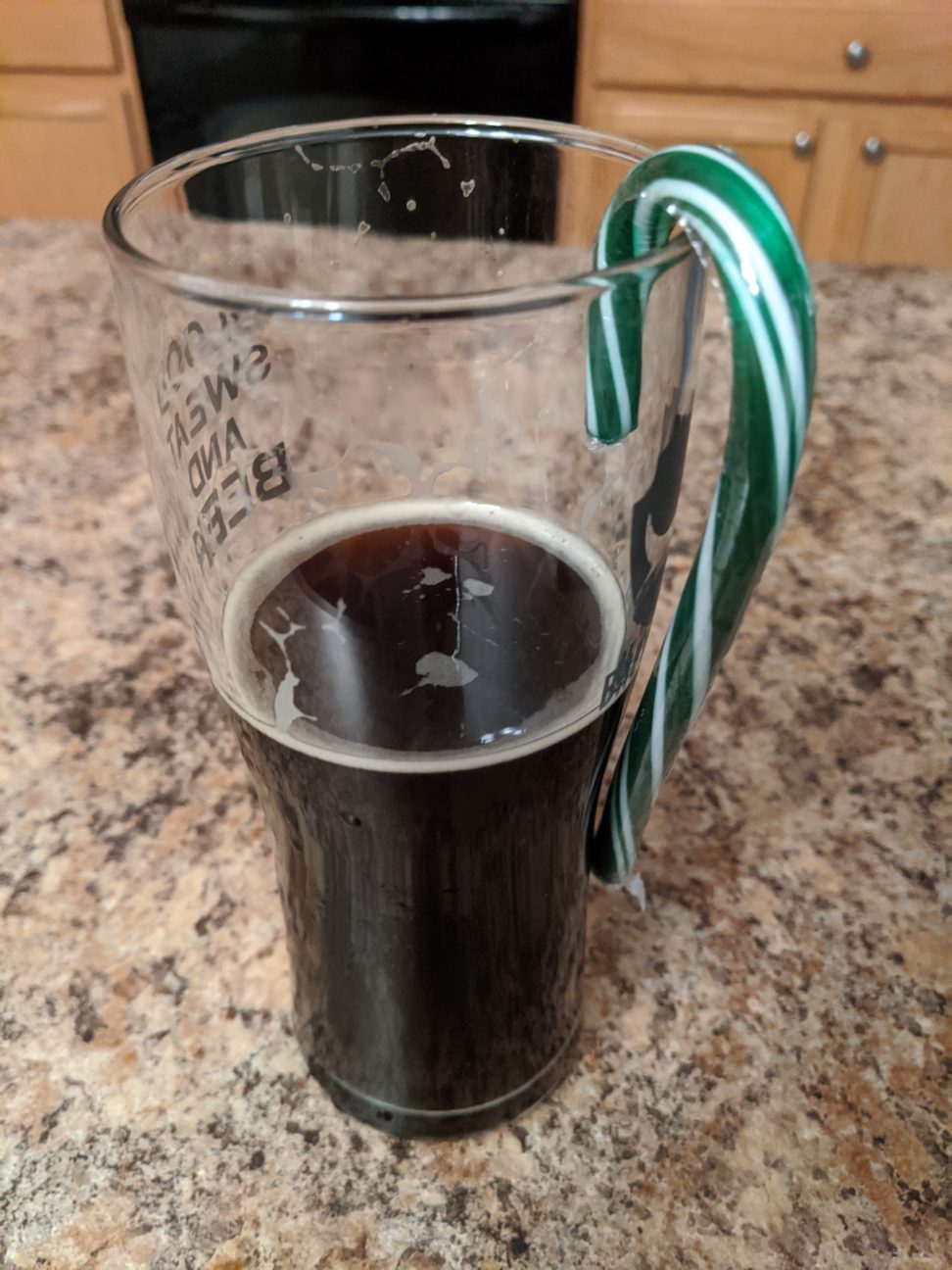
In five years of homebrewing, I have never made a holiday beer. Then, while looking through Zymurgy I saw a Peppermint Porter that caught my eye.
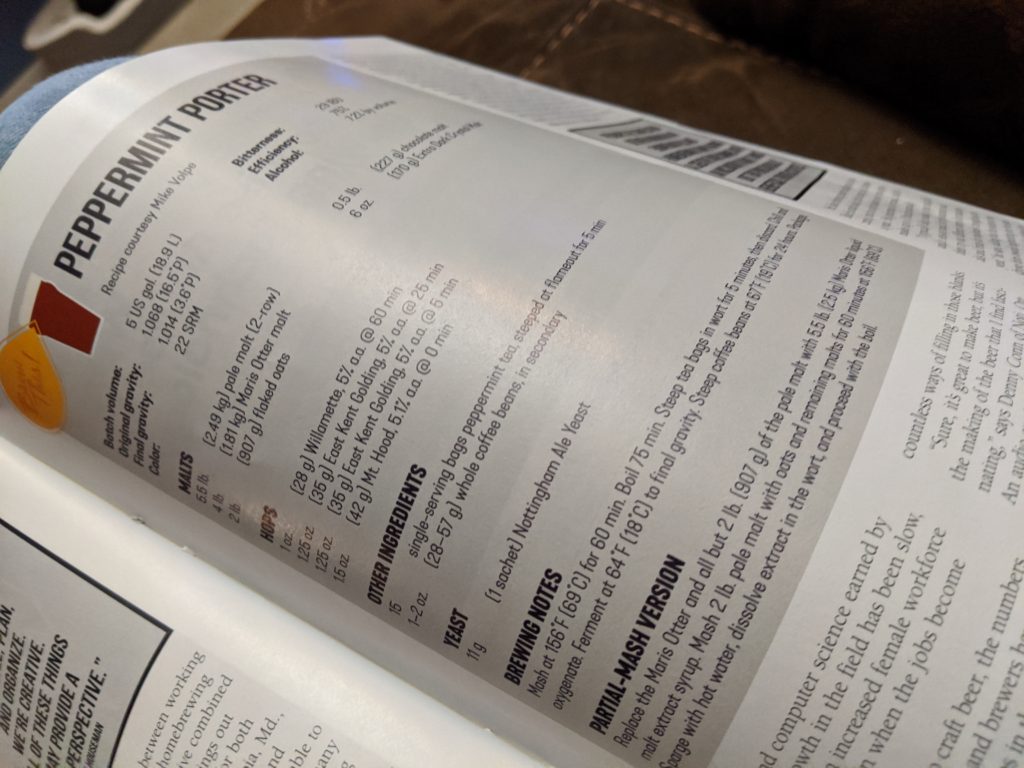
I didn’t make a bunch of changes to the recipe from the magazine – I did change the yeast (I used Imperial A10 Darkness instead of Nottingham), and I used Chocolate 350L instead of what appears to be Chocolate 450L, and I used a peppermint holiday tea blend instead of straight peppermint tea. Otherwise, I used the recipe as-is.
I did use some water adjustments. The dark grains and my alkaline water tends to push the pH high and it’s low on bicarbonates for a brown balanced beer so I added some pickling lime (I didn’t want to bring sodium up with baking soda).
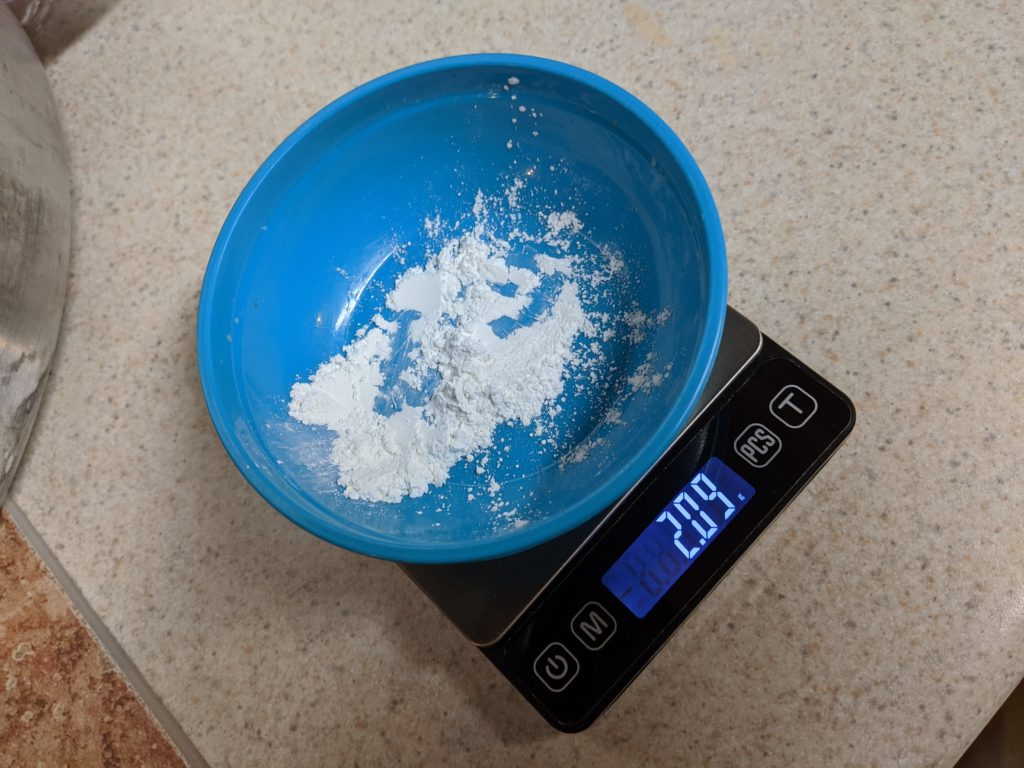
With the grain milled, mashed, boiled, and hops measured, everything proceeded as normal…
After getting the boil setup, I realized that I forgot to change out the upper port on my kettle with the dip tube that I use for whirlpooling. I was able to tilt the kettle towards the end of the boil and replace it. After that I didn’t stop to think what else could go wrong.
Little did he know, something else would go wrong
–Narrator
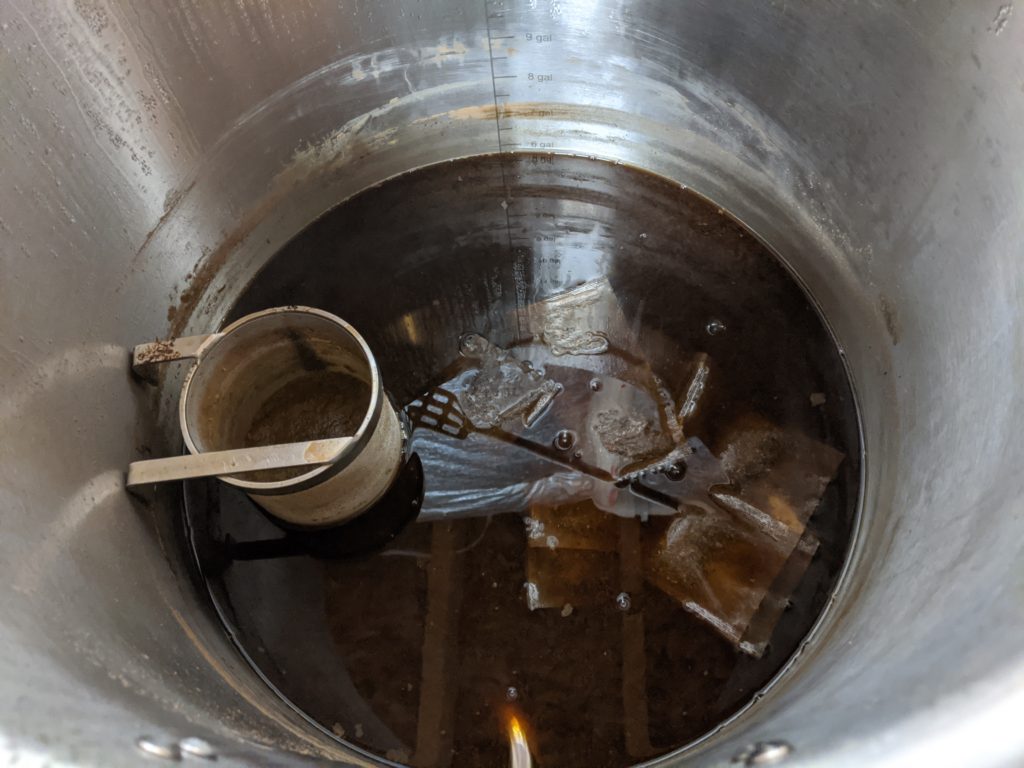
I got to the end of the boil and brought the temp down to about 185-190, which was my recollection of the proper tea steeping temperature (it was black tea, it should have been higher, but whatever). I added in the tea bags, which had no strings or tags (this was swanky mass-produced tea, not low-class-Lipton mass-produced tea!). The screen was full of hops (this recipe calls for 4 oz of hops) In hindsight, I should have thought about the fact that those things could sink and clog the dip tube.
And clog the dip tube, they did
–Fucking Narrator
After dealing with the clog from Hell (aren’t they all?), I got the wort down to 68F and added the yeast. I let it rock for a day and saw that it was getting a little too warm, so I moved it to a water bath (something I will likely do more of). This brought the temperature back down to 68F. Fermentation went QUICK. I brewed on Saturday, by Monday evening, it was at 1.012, and Tuesday evening it was at 1.010 I added around 2 oz of Kona coffee beans on Tuesday evening and noticed something in the fermenter. I don’t taste any off-flavors, so I’m hoping it’s just some krausen or tea bag that made it through or something.
Fortunately, it was just a part of a tea bag
That damn narrator again
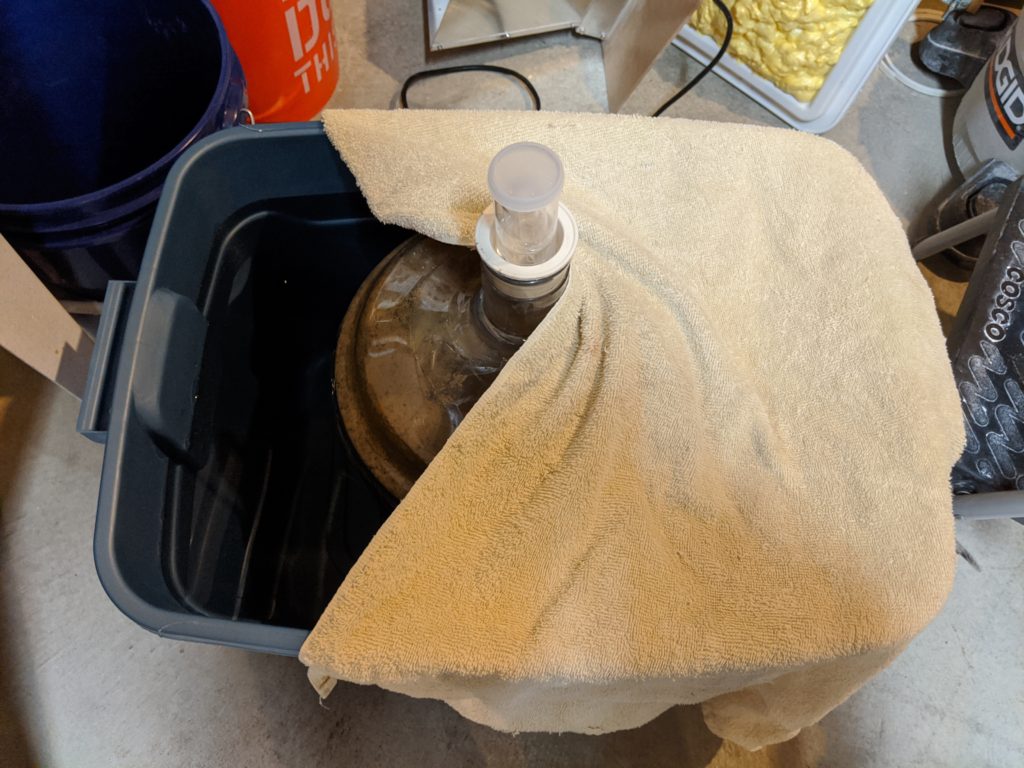
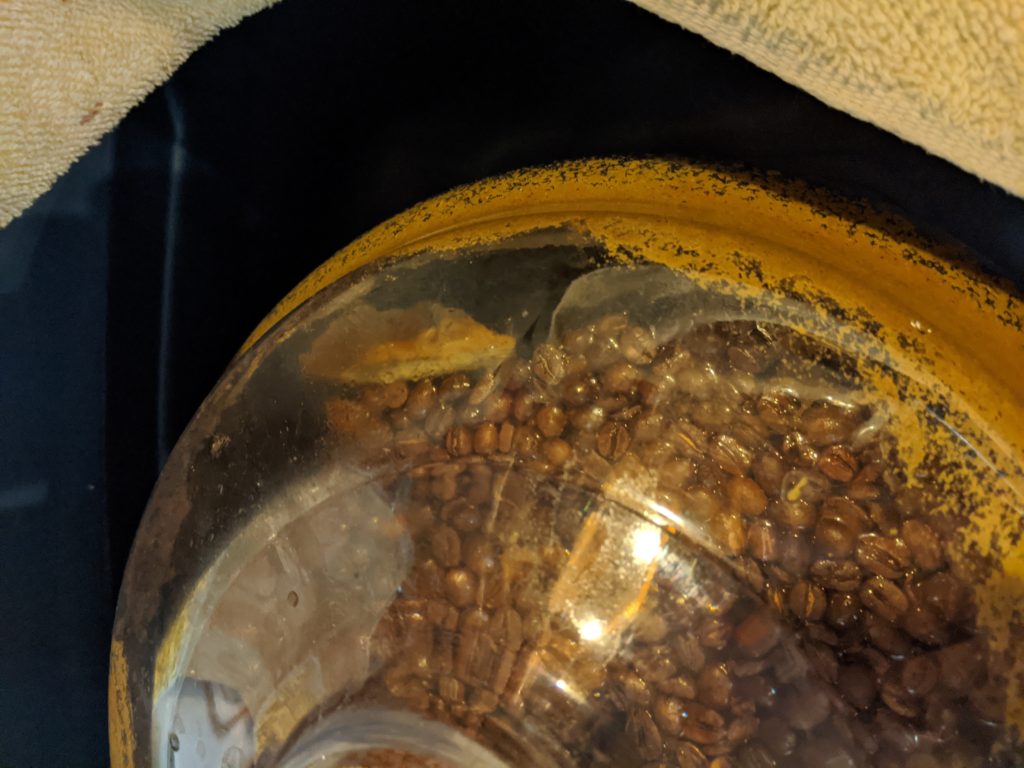
The numbers:
OG: 1.059
FG: 1.011
ABV: 6.4%
Taste
Aroma and flavor are light peppermint and coffee. The flavor also adds some cream and a hint of smoke. It’s very pleasing and very festive. 🍻
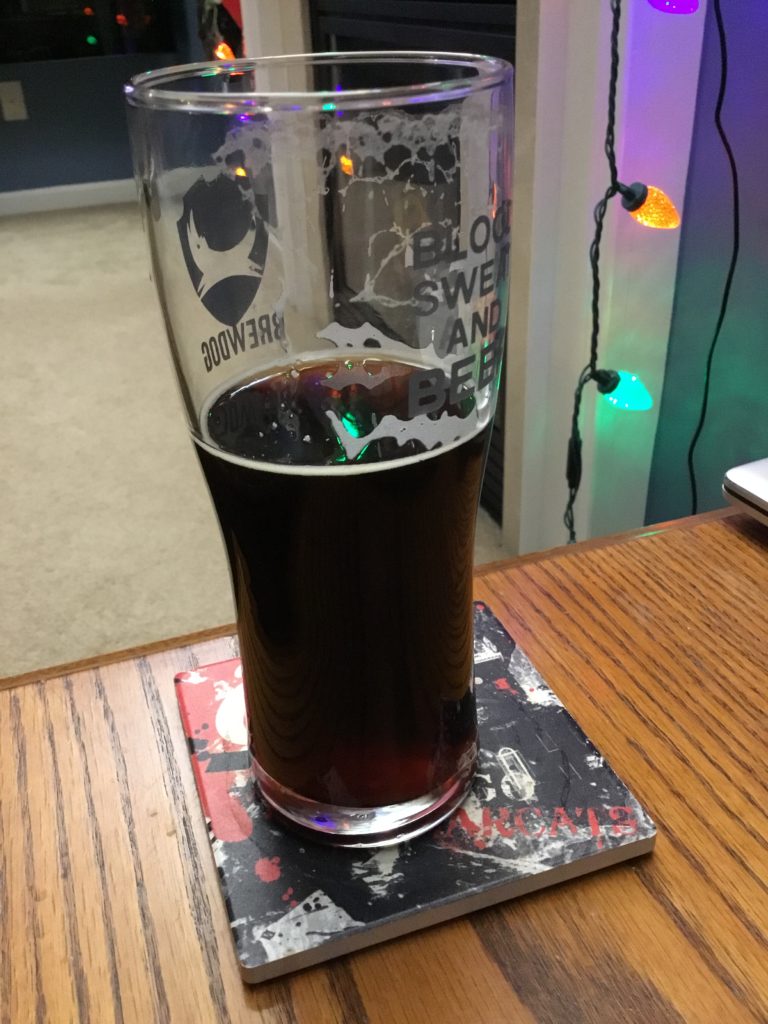
Top Ni… Whatever. (Back/Forward 2019/2020)
Apparently, there’s a thing going on with Instagram that people are posting “Top 9s”. I’ve had a mostly-hate relationship with Instagram because of a variety of reasons… not limited to the lack of a chronological and un-curated feed and a shit ton of newlines ending with a list of hashtags for reasons I don’t care to give a shit about.
I looked back at my post list for the end-of-2018 post, but it wasn’t there. Apparently I care a lot about resolutions! Well, to be fair, I was building out my office as I had just changed jobs from one that required me to drive to downtown Cincinnati every day to one where I work from home.
There was a post at the beginning of 2018… my how things have changed since then! I was complaining about blowing up cheap $20 pumps from eBay and doorbell transformers (and other power supplies). I’ve since graduated to the real world of a pump that plugs into the wall (and thank God I haven’t blown that one up!)
I also talked about building a wall. I’m not sure how my speed relates to that of the Federal Government, but I’m close. I have about two feet built.
Last Year’s Progress
On the equipment front, I bought some stainless stuff. I got sick of dealing with barbed connectors and began moving towards tri-clamp fittings on everything. Also, I decided to use an upper port on my kettle for whirlpooling.
I also got extremely angry at my plate chiller and decided to buy a counterflow chiller. I’m pleased with it (even more pleased that I didn’t clog it in a recent brew).
I decided I’d build a spunding valve setup. I haven’t used it yet, though.
The last equipment news is that I bought a Blichman Beergun. I entered the SJ Poor Challenge and wanted a better way to bottle beer, this was particularly due to some differences in scores between the only two competitions I entered.
On the brewing front, I won a gold medal in one of the competitions I entered, with a Dunkles Bock. The same beer went into a second competition a week or two later and the scores were not as good. When I entered the SJ Poor Challenge with a fruited milkshake IPA, I decided I wanted to ensure oxidization was not a factor.
2020 Stuff
There’s a few things I want to do in 2020 (other than brew more).
I want to get started on being a BJCP Judge. I want to get my Provisional (I think… it’s hard to figure out which/what when their websites have been a hot mess for the past three years). The other side of that is trying to ensure I can actually USE the certification (e.g. SWMBO will let me go drink beer all day).
I want to continue improving my homebrewery. There’s already a few improvements that haven’t been posted by this blog, and there’s one big one that I still need to do – an exhaust hood. I run a dehumidifier in my basement, which generally runs for two days following a brew session. I do need to change that. I also have some drywall that can be installed, although I need to add insulation and studs first.
I want to try to post more on this blog. I posted six things last year. I want to try for more. I do have a backlog, so every week in January (on Wednesdays) will have a post. I also want to fix the format/look/feel of this blog. The one I have is free (and feels like it). I’m not really all that pleased with it, and I have a ton of WordPress experience from the other sites I work on.
Finally, I want to do more with video. I’ve always had a mild interest in doing video ever since working in 3D Visualization in the early 2000s. I’ve been kinda following along with a few people, and probably overthinking the video thing (although I do want good sound, good video, and good everything else too). Video is one of those tough things to get right because a simple YouTube search shows that, like nutrition, everyone is an expert… unlike nutrition, there are many experts with many different approaches that all work!
That’s all for now. Happy New Beer… er, I mean Year! 🍻
Hey, Let’s Make a Lager!
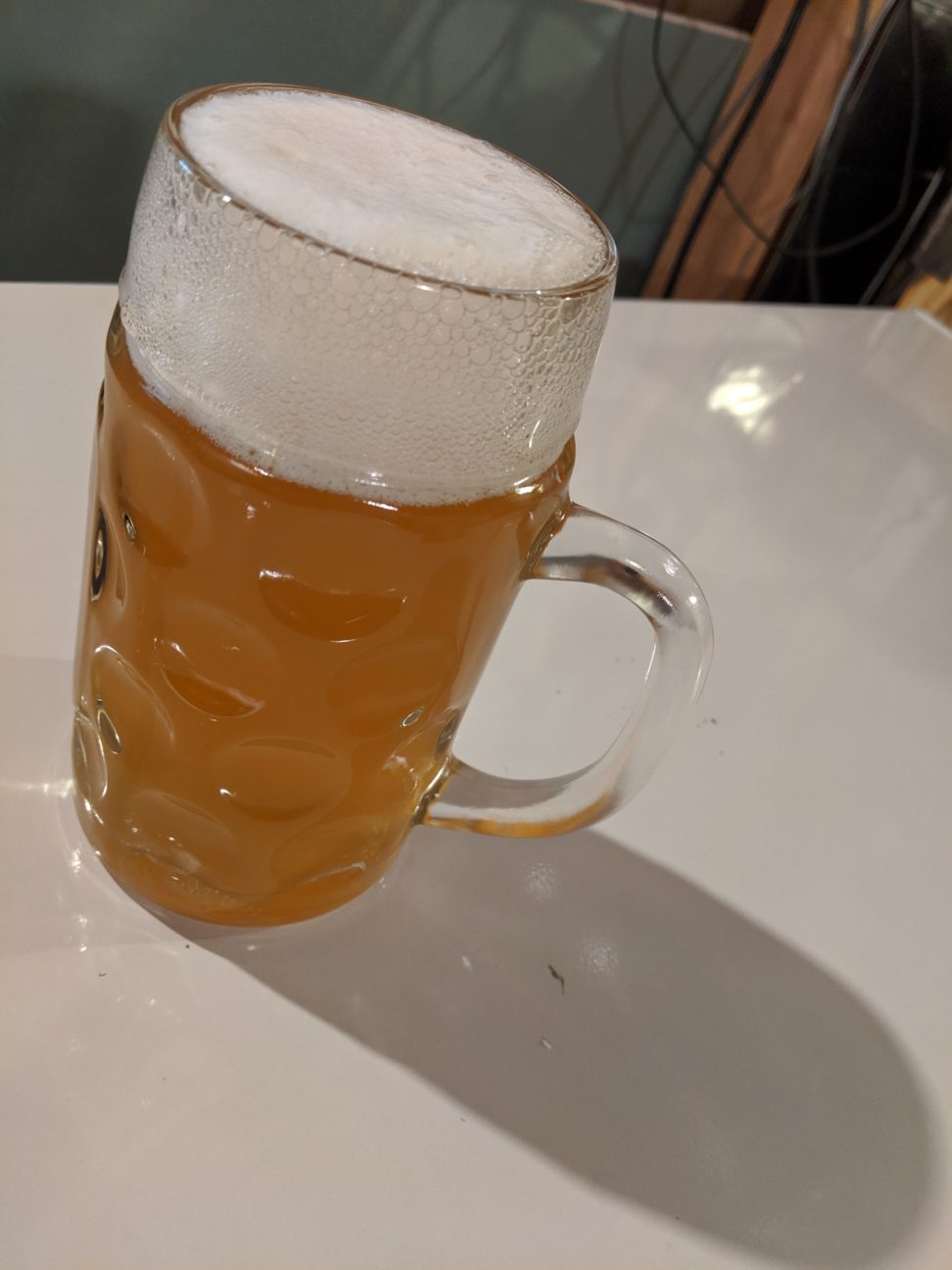
A few weeks ago, I recieved some sample hops courtesy of Exit 12 Brewery, and wanted to make something light-ish that I could drink while watching football.
I didn’t have a specific plan in mind, so I looked back at a previous brew I did, Vampire Dust. Initially, I thought it was a lager, but maybe not (I certainly didn’t lager with London Ale yeast!).
The recipe turned out as below. I was concerned with the bitterness of the beer, but we all know The IBU Is A Lie. I think it’ll be fine.
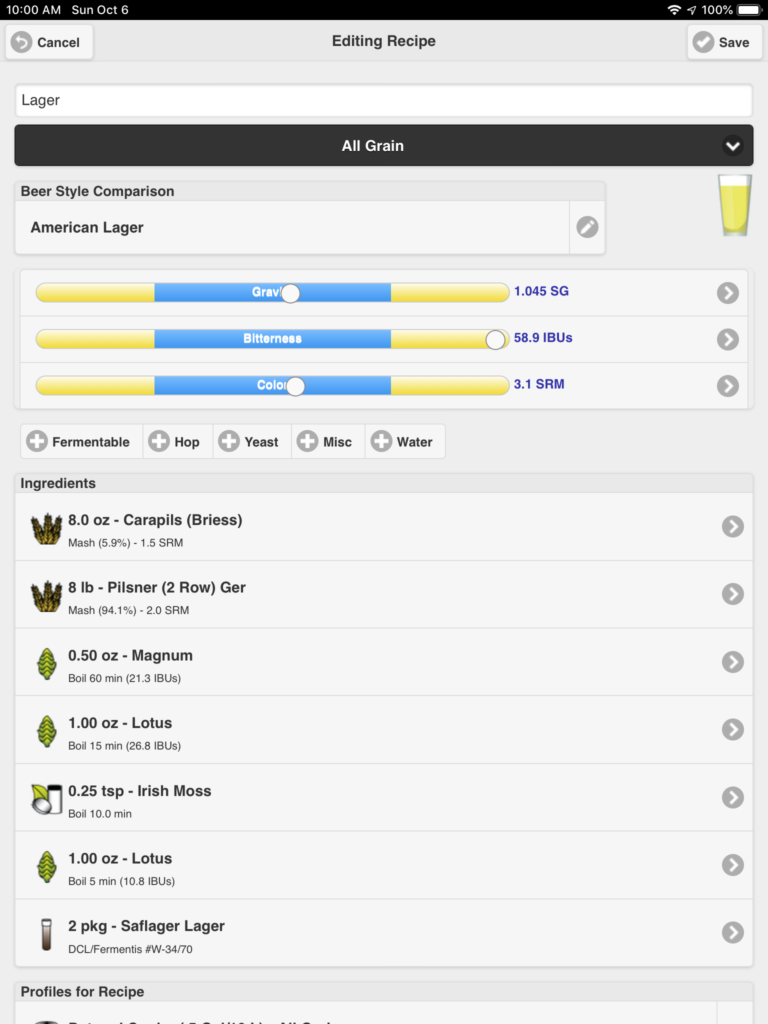
I had water set out from the night before and got started, but I saw some soapy-looking foam on the top of the first batch. Despite not tasting soap, I didn’t trust it. I dumped it and heated up my second batch of water. Ultimately, some sparge water came from the tap and was treated with Campden.
I mashed in without checking my HLT temp and found my mash temp to be down to about 140F, which is much lower than normal. So I heated up more water (which was going to be my sparge water) and added 2 gallons of 172-ish degree water to get the mash temp just up to 148F. I let it go for an hour and pulled a sample at the end to check gravity and pH. Gravity was 1.052 and pH was 5.5.
Boiled for 60 minutes with no issues, adding hops as scheduled above. Pulled a sample of wort at the end of the boil and began chilling and filling the carboy, which ultimately went into my keezer to chill more since groundwater is still a bit warm.
Went to check the OG… 1.056. This entirely baffles me, since I’m never that efficient. It’s making me question my thermometer. Presuming this beer finishes around 1.010, I’m going to end up with close to a 6% lager. Even more so, I’m going to check my thermometer. In addition, I may have mis-measured grain (or paid for an extra half pound). I checked the recipe with an extra half pound of pilsner malt and it bumps the 1.045 OG up to 1.048.
I decided that since W-34/70 tends to work well at room temperature, I’ll try my fermentation chamber that I’ve been building. I quickly added some styrofoam insulation to the top and door and got the peltier element running. Thinking that I might have to deal with issues of it staying a little warm, I didn’t add a temperature probe yet. I chilled the fermenter to 55F and move it to the chamber.
I learned that it isn’t working all that well. After seeing the temperature rise into the 60s F, I added some fans to try to help the situation. It didn’t.
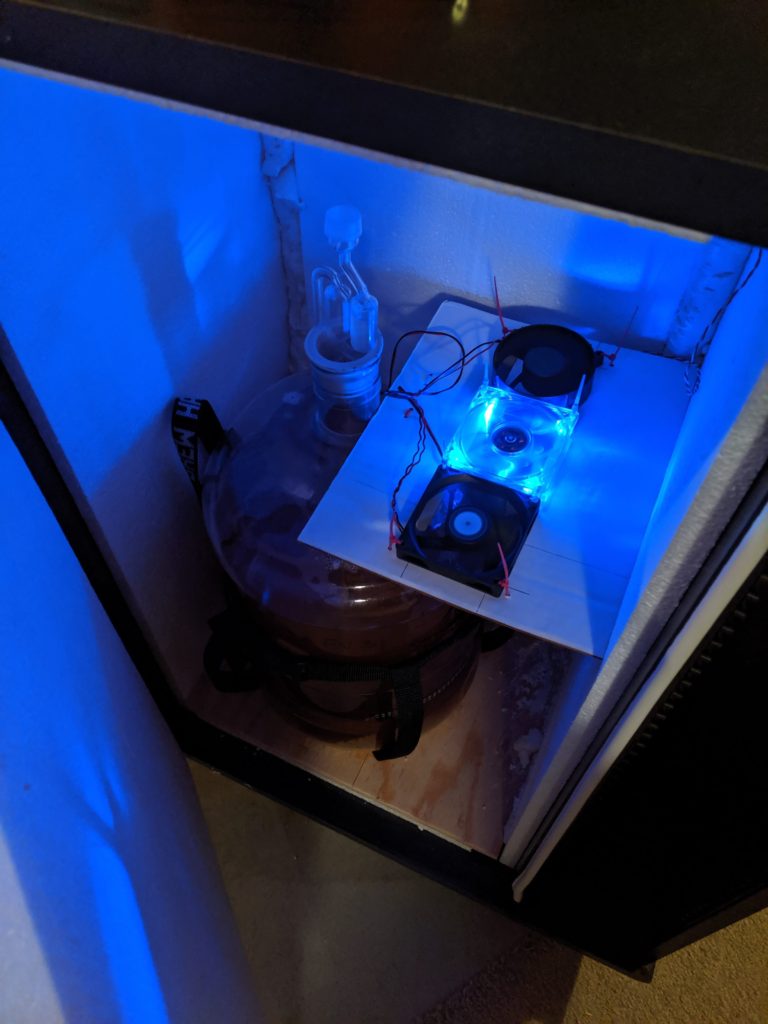
Yes, I had a lighted fan 😎 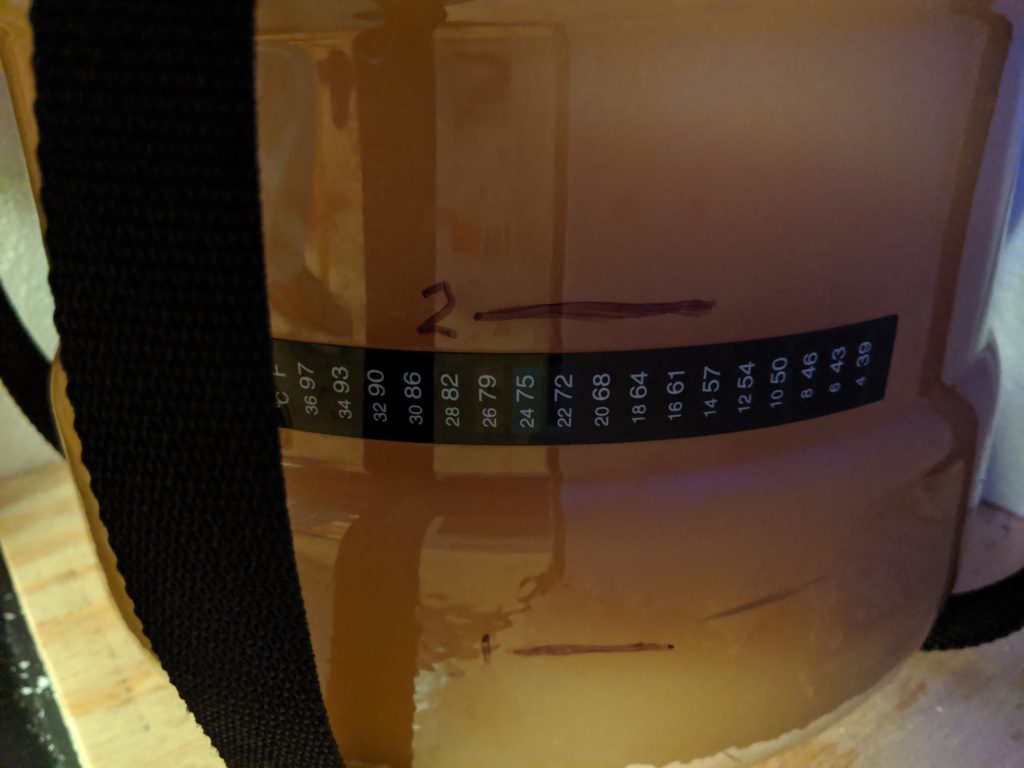
75… uhhh… 😕
Fast forward to Thursday, less than a week after the Saturday brew day. The airlock activity has ceased and the krausen has fallen. I pull a sample for a hydrometer and it’s 1.007. I taste the sample expecting a fruity fusely mess. Nope. It’s slightly fruity, but no fusels detected. I moved the fermenter into the keezer for lagering. My expected FG was 1.011, so clearly my mash temp was a little low… I adjusted the recipe to a light body profile and it dropped the FG to 1.009, so pretty close.
After lagering for a few days, I did pull another sample and it tasted a little green (acetaldehyde). It needs more lagering time than a week, but that’s expected.
After I removed the fermenter, I left the keezer on and put a temperature probe in through the door and left it for around 12 hours. Clearly I need to do some work on things, since it can only keep the chamber down to 68 🤷♂️.
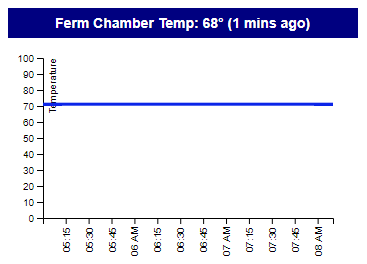
I’ll need to do more work to do some better insulation – part will be an improvement in the sealing around the door, and I’m going to pull out the styrofoam and add better insulation that I have leftover from my office build project.
Review
Appearance: Hazy yellow with a fluffy white head
Aroma: Fruity, apple, grainy
Taste: Malty and fruity. Some apple and vanilla. Very restrained bitterness does not represent anything remotely close to the claimed 59 IBU.
Mouthfeel: dry, thirst quenching.
Overall: very easy to drink. Would prefer a tad more bitterness (the fl
Next version: I’m likely going to double-up on the bittering charge, as this just isn’t as bitter as I wanted. I like it, but it’s not what I really was aiming for. 🍻
Mango Vanilla Milkshake IPA Brew Day
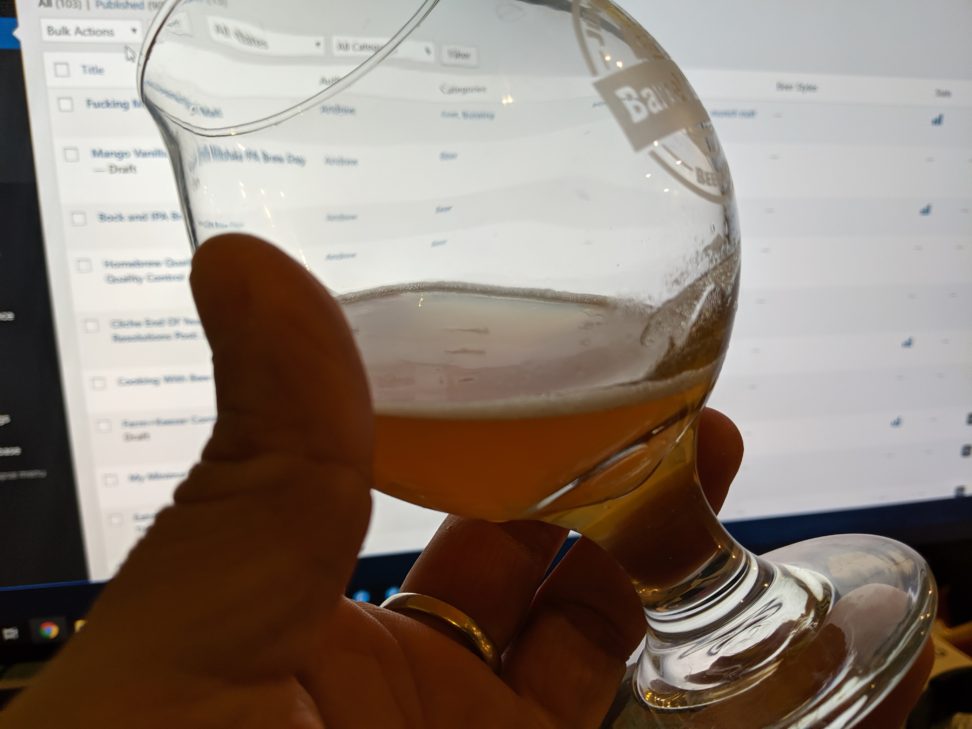
Sometimes you’re Two Hearted. Sometimes you’re Natty Light. This brew day felt more like Natty Light.
I was not actually ready to brew. I had most of the ingredients. I had the yeast I wanted to use. I had most of the hops I wanted to use. I had the mango. I had both vanilla beans and a vanilla tincture. I didn’t have water put out, but I had Campden Tablets… which I had to look for.
I also am trying to make small improvements in my brew day. I’ve been adding tri-clover fittings to everything… the decision to use this type is due to my boil kettle having that type – and I want only one system.

In addition to the tri-clover fittings, I had a three-way valve. Something I’ve never used.
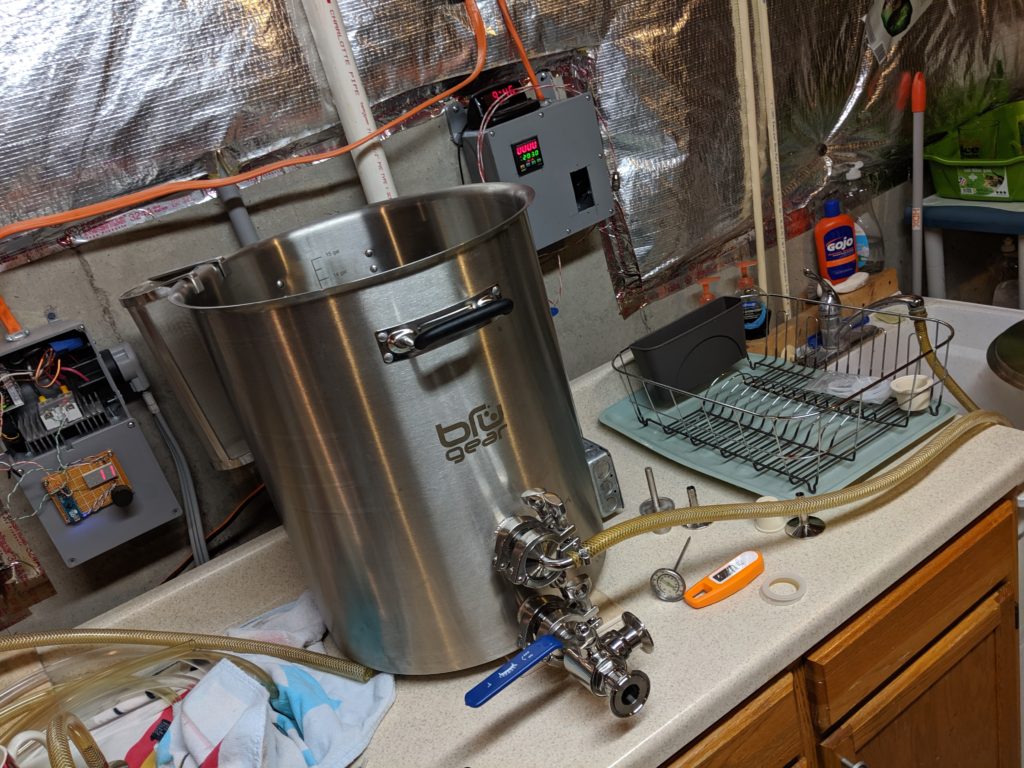
So I start getting the HLT heated up (and it’s temperatures are not reading correctly, as I found in my last brew day), and getting some water started to pre-heat my mash tun. At that point, I decided to mill my grain. My system for this is really shoddy – I have my mill mounted to a too-thin piece of plywood with nothing to ensure that all the milled grains go into a bucket. Usually, I can get all the grist into the bucket. This time was different, I lost a fair bit to the floor.
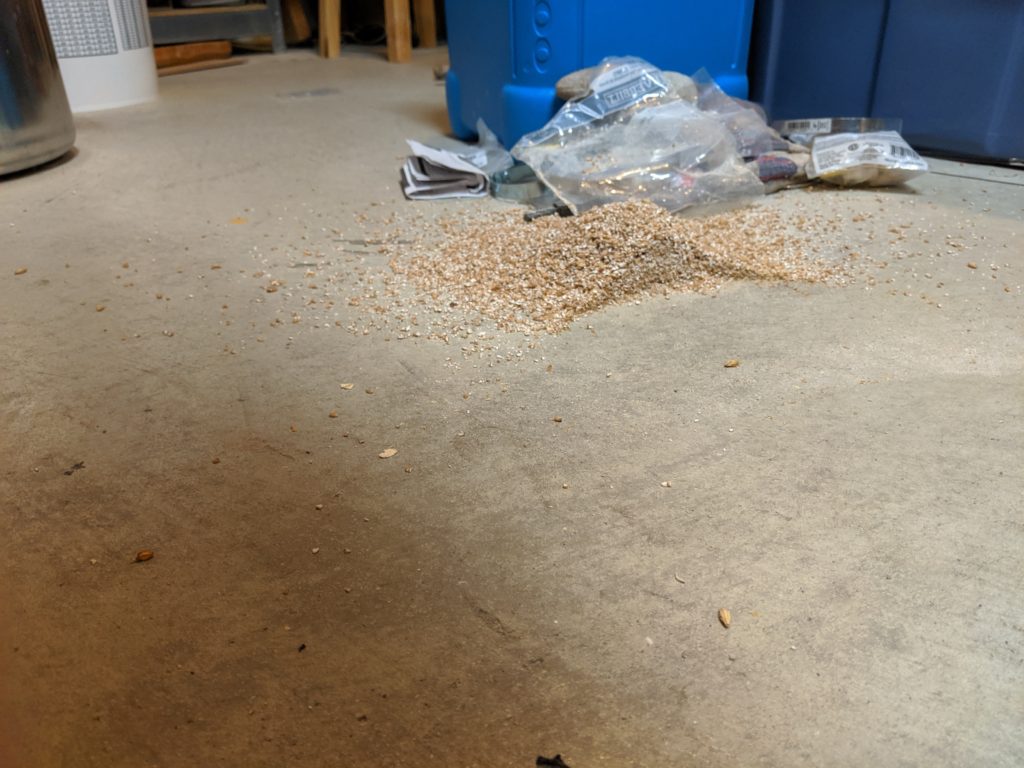
I mashed in and hit my temps and somewhat close to my gravity numbers… given that I had a bit of malt sitting on the ground that went into the trash can.
Then I got to 15 minutes remaining in the boil. I added a late charge of hops and started setting up for a whirlpool and to run hot wort through my new counterflow chiller… and I was one tri-clover clamp short. I tried to adapt by attaching my pump directly to that new three-way valve. As soon as I powered up the pump, it started squealing so I turned it back off. After much finagling, I got the pump running on the “wrong” side of the chiller. I would have preferred to have the pump between the kettle and the chiller… I was able to get stuff running by having the pump between the chiller and the whirlpool inlet. I then added the whirlpool hops and (oops, late) lactose.
I had a very weak whirlpool that made me concerned, but I let it go… and it did chill. I got the wort down to around 85 and had difficulty getting the three-way valve to send the wort to the fermenter. After finally getting it there, I pitched some Omega Hothead Kveik.
After two weeks in the fermenter, I added mango. I used 5 pounds of frozen cubes that I slightly thawed in my microwave and then pureed in the blender (sanitized, of course) and dumped the puree in via a funnel. A few days later, after the secondary fermentation kicked off, I added around 8 ounces of vanilla bean tincture (cheap vodka aging 4 vanilla beans that were sliced open). I had so much difficulty with getting samples that I cold-crashed the fermenter and kegged without too much tasting. I was half a gallon low into the fermenter (I target 5.5 gallons in the fermenter any time I dry hop). I lost a gallon to fruit. Maybe it would have been better if I cold crashed longer, but I’m not sure.
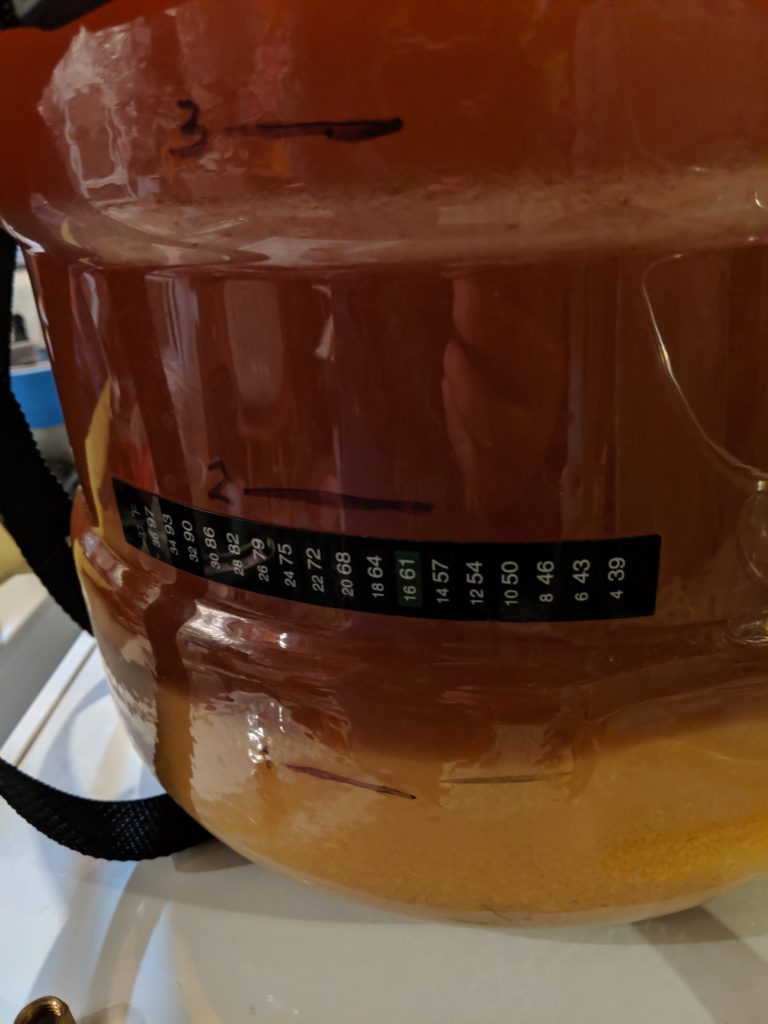
I kegged it on July 7 with some keg hops. I was hoping that I could take it to a homebrew club meeting on July 11. Between running out of CO2 and green hop flavor, it wasn’t happening.
The aroma is vanilla and tropical fruit, obviously dominated by mango. The appearance is opaque copper. Once properly carbonated and aged to allow the hops to meld a little, the flavor is quite nice – the slight carbonic acid bite actually works well here. There’s a lot of hop flavor, little bitterness (but there is some), and some vanilla that comes in late. There is a sweetness to it, which is as expected. The mouthfeel has a slight thickness, which works well for the style but could probably use to be amplified.
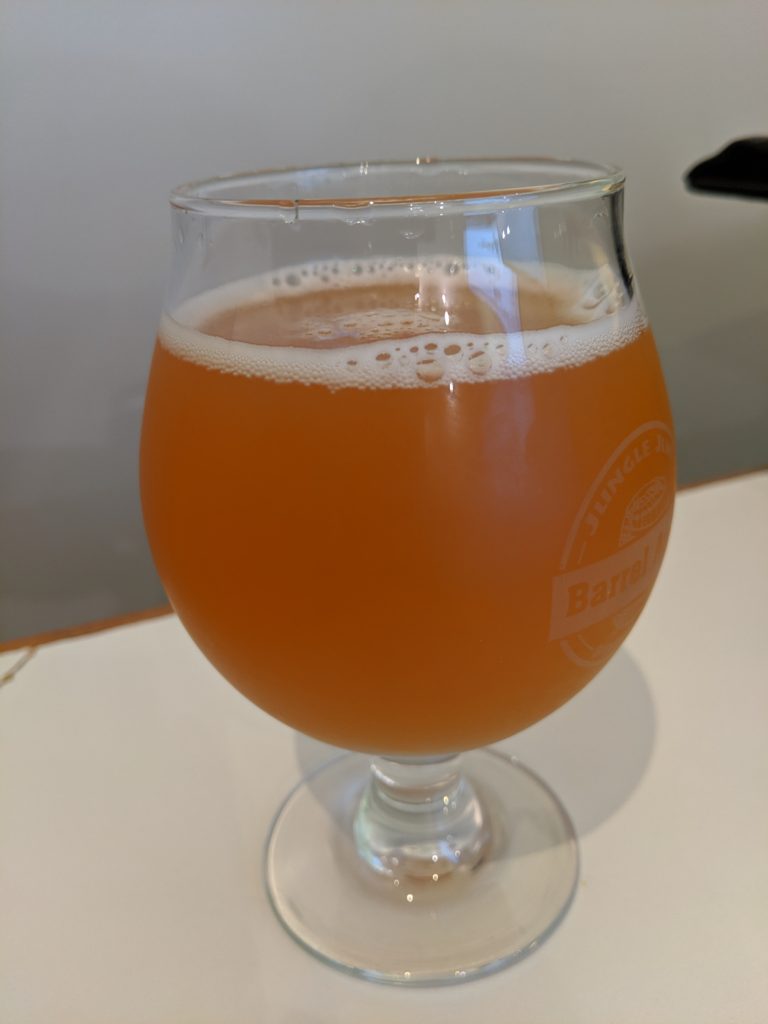
Cheers!
Fucking Munich Malt!
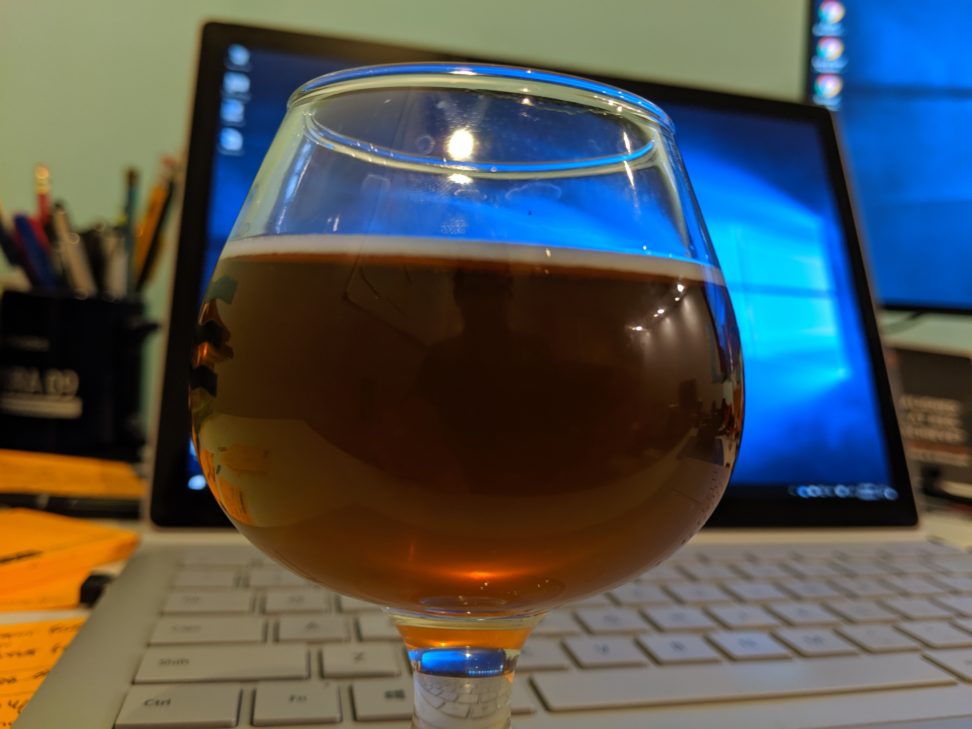
Every time I’ve brewed with Munich malt, I’ve had a problem of what seems to be acetaldehyde (or maybe it’s just ‘green’) flavor in the beer. There hasn’t been many, and these have not been brewed consecutively. Brews between these have NOT exhibited the same flavor, and the flavor does fade after time.
Brew 1: British Mild
This was brewed on 9/3/2017 and was supposed to be a partial fresh-hop (Chinook) IPA, propped up with some Chinook pellets. The hop character wasn’t as extreme as an IPA and I ended up using some S-04 mixed with an un-inflated bag of Denny’s Favorite (long story). I noticed the acetaldehyde flavor, as did a judge or two at a competition. I liked the beer, though, and drank the heck out of it.
Brew 2: Dunkelweisen
This was brewed on 12/17/2017. This beer was all over the place, and at one point had a distinct Festbier taste, probably from the aroma hops I shouldn’t have used. I recently (at time of writing) opened an old bottle and it’s way too bitter for a Dunkelweisen.
Between brews 1 and 2, I brewed an IPA. No Munich Malt in that one, and no acetaldehyde-ish flavor.
Brew 3: Bock
This was brewed recently (12/27/2018), and it was a door prize from my homebrew club. It ultimately got over the sweet flavor to end up as a damn good beer that won a gold medal in the Bloatarians Bockfest Competition.
Between brews 2 and 3, I brewed a Flander’s Red (still in the fermenter), a pale ale (had a different off flavor later found to be due to improperly cleaned equipment), a tropical stout (no off-flavor, no Munich Malt), and a pale ale (no off-flavor, no Munich Malt)
Brew 4: Fuck Munich Malt Beer!
The two common threads the above beers have is the same LHBS and Munich Malt. So I decided to test this out with a beer somewhat reminiscent of that British Mild above, but with a little bit more backbone. I purchased the grist from a different LHBS.
Recipe was simple (but not simple to get from BeerSmith on my iPad to WordPress). This is for 5 gallons into the fermenter:
10 lb Maris Otter
1 lb Munich 10
0.5 lb Crystal 60
0.6 oz Magnum @ 60 min
1 oz Fuggle @ 15 min
1 oz Falconers Flight 7Cs @ 5 min
1 pack Wyeast 1318 – London Ale III
I made a change to this brew day – I added some stainless. I bought two pickup tubes – one for the bottom of my kettle and one for the top. The bottom is to get more wort with less tilting. The top is to form a whirlpool during the final 15 minutes when I recirculate through my plate chiller to sanitize it.
Brew day was somewhat frustrating. First, my thermometer disagreed with my PID… and I’m not 100% sure which one was correct. Ordinarily, I’d go with the thermometer, but later this happened…
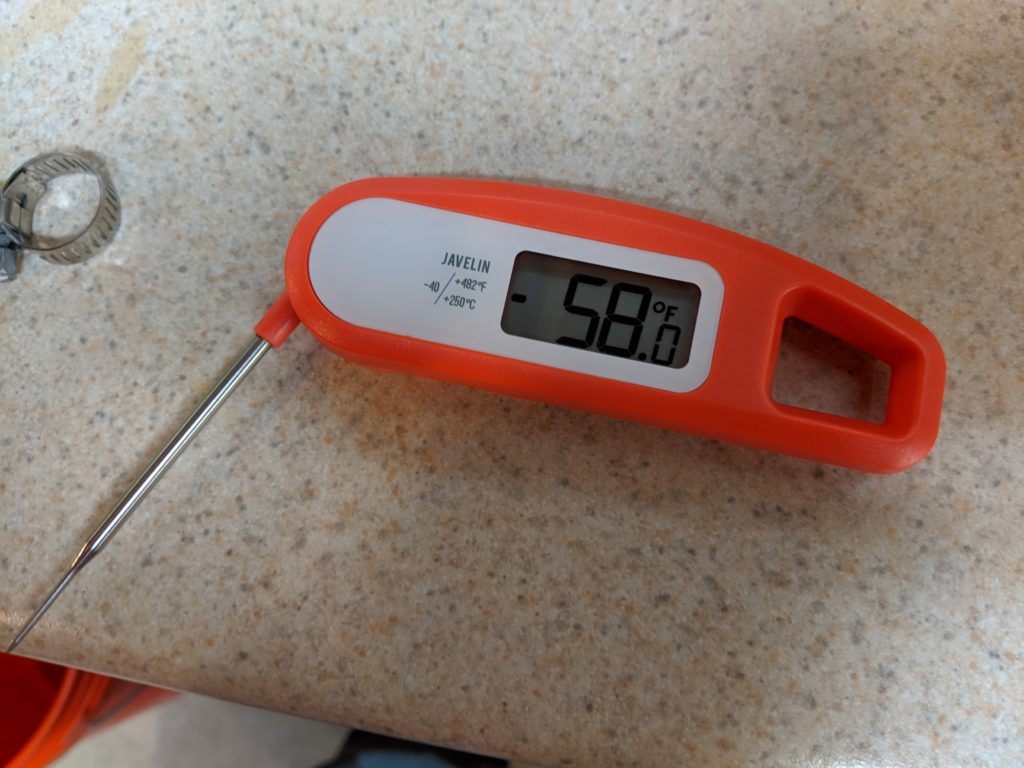
Then my plate chiller (which is a 🤬🤬 piece of 🤬🤬 🤬🤬🤬🤬 🤬🤬 🤬 🤬🤬 🤬🤬🤬 🤬🤬🤬🤬… and don’t even ask what a ‘🤬🤬🤬’ is!) clogged. Had it not, that new stainless would have had a damn good whirlpool. Given my frustrations with cleaning it (it likes to hide break material and hop material no matter what I do to clean it), I broke down and bought a counter-flow chiller the day after brew day.
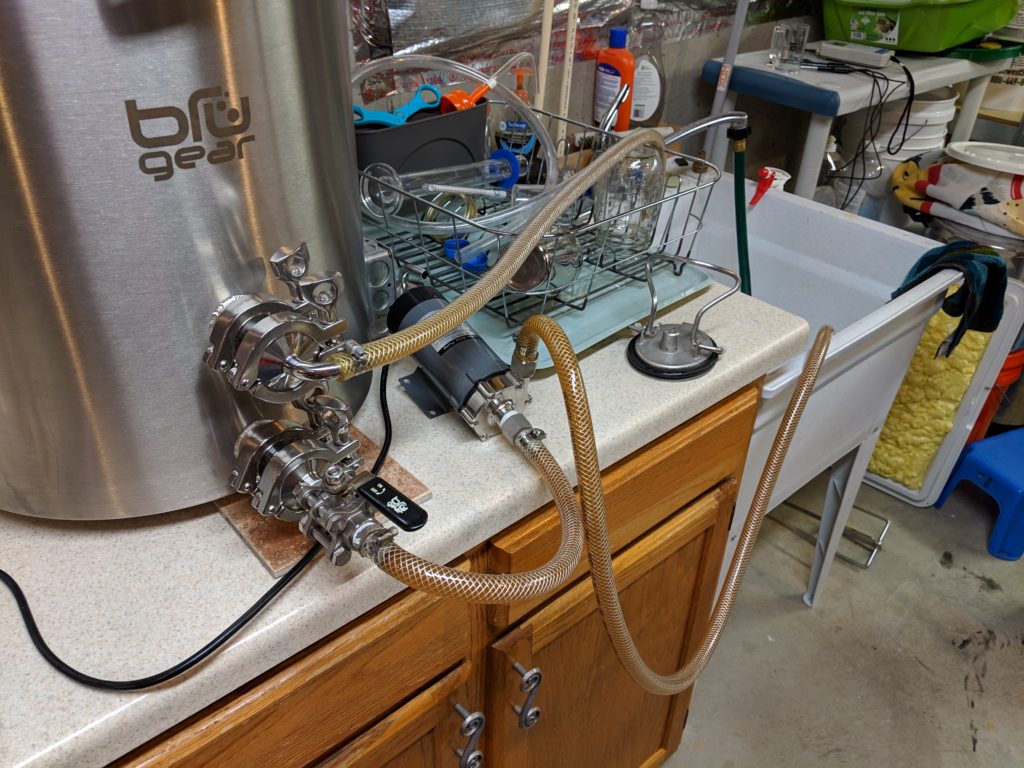
There was another issue. I thought about how I’d make a whirlpool, but did not think about how I would get beer into the fermenter. Oops. I’ve bought more stuff from Brewer’s Hardware to fix that, too.
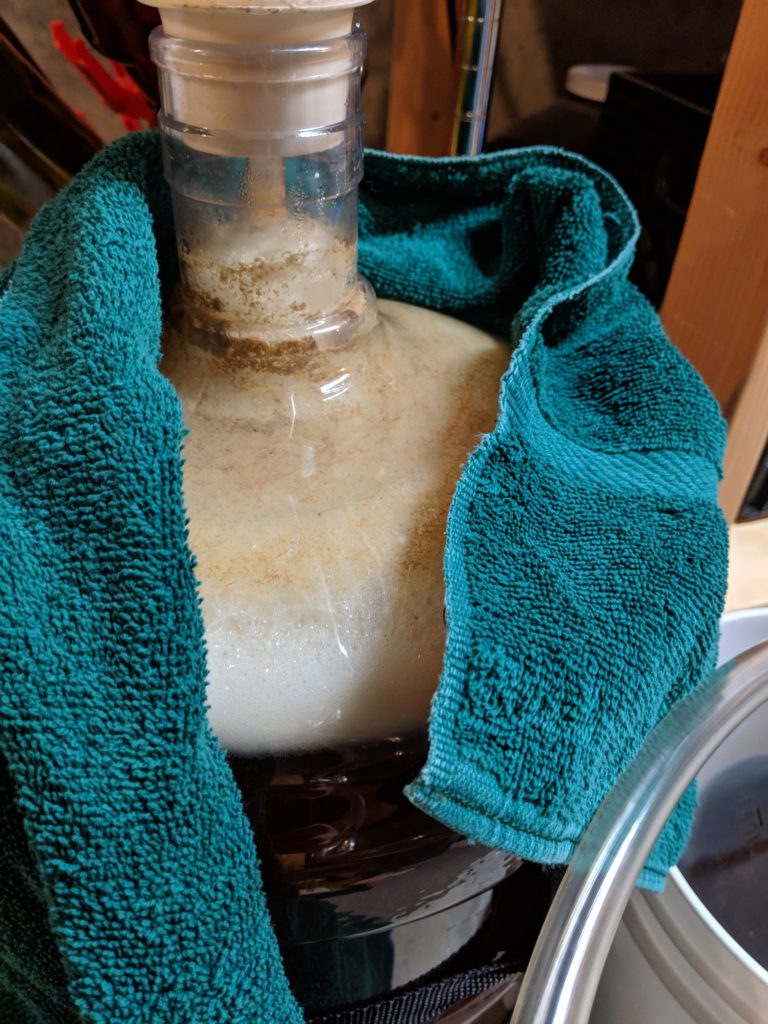
This ended up staying in the fermenter for a while, and during various tastes, I DID pick up on that overly-sweet flavor. Somewhere (I don’t remember if it was a podcast like Experimental Brewing or talking with a friend+brewer or homebrew club buddy), I got the idea that it might be a yeast phenol. I ended up leaving it in the fermenter for an extra week or two. The flavor faded, which makes me think that it is a yeast-based off-flavor. The British Ordinary Bitter that I ultimately kegged was quite tasty after the extra conditioning time.
The appearance is hazy with a copper color with a white head. The aroma is slightly hoppy with some nondescript malt. The flavor is bready and cherry, and is really quite nice, and there is a slight bitterness on the end that has a slight woody quality. It was a bit of a hit at a homebrew club meeting.
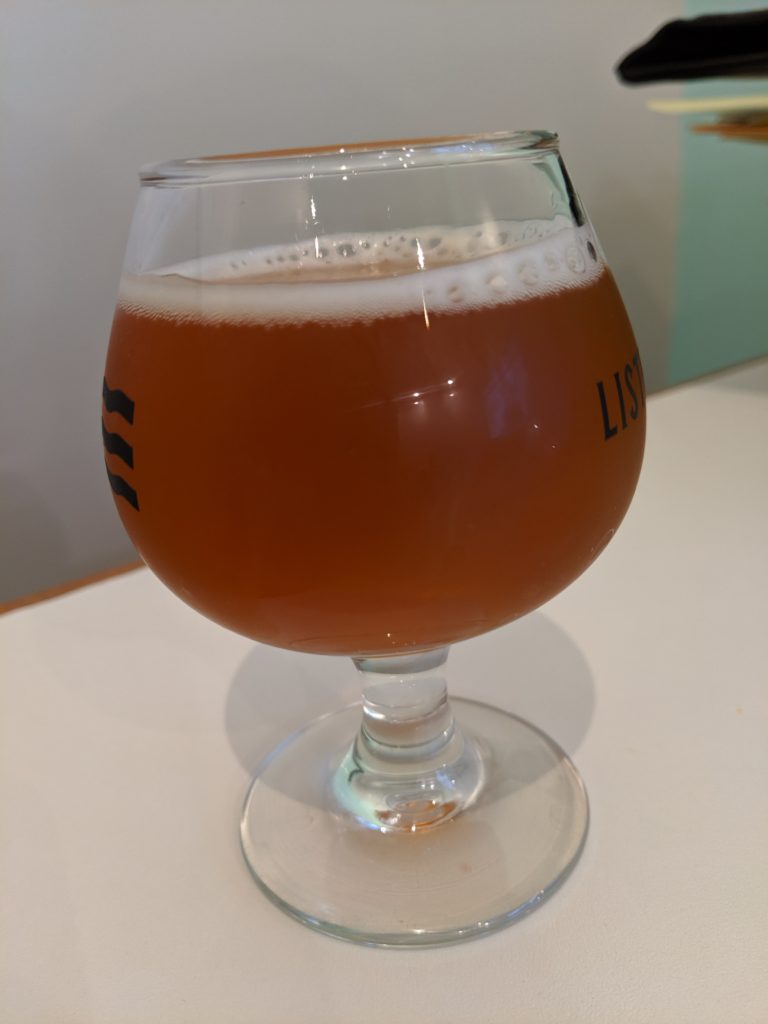
Back to that “Fuck Munich Malt” Part…
As is similar with the others, I brewed a few things between brews 3 and this brew – an IPA and a Saison, neither have an off-flavor or Munich Malt, and after this brew, I brewed a milkshake IPA with no off-flavor and no Munich Malt (the flavors are pretty strong in that, so this doesn’t tell us anything!)
So one thing to note is that I *did* taste that off flavor with the malt from the different LHBS – so I feel like it is NOT a problem with either LHBS, it’s a ‘thing’ with Munich Malt. There’s a lot of beers that use Munich Malt that are lagers, and the extended lagering should ultimately drive off the flavor.
Cheers!
Bock and IPA Brew Days
My pipeline of homebrew went dry. I had been in a fine position until I needed to build an office in my basement, which took precedence over brewing. However, I work from home now, and my pay increased as a result 🙂. I’ve been enjoying some commercial beers – we’re truly blessed in Ohio to have such wonderful beers to drink!
Bock Brewday
I won a Dunkles Bock kit as a door prize from the homebrew club Christmas Party. I brewed while working, which was stupidly arrogant. I missed my mash temp by 10 degrees and ultimately did no-sparge because of the amount of hot liquor I had to add to get it to 152, which is lower than I wanted still. And I only got 4 hours of working instead of 8. I’m never doing this again. I didn’t take any pictures (because work).
The beer was ultimately a 5.5% Bock, which is a little light. However, it won first at the Bloatarian Bockfest Competition and after the green-ness wore off, it was a damn good beer!
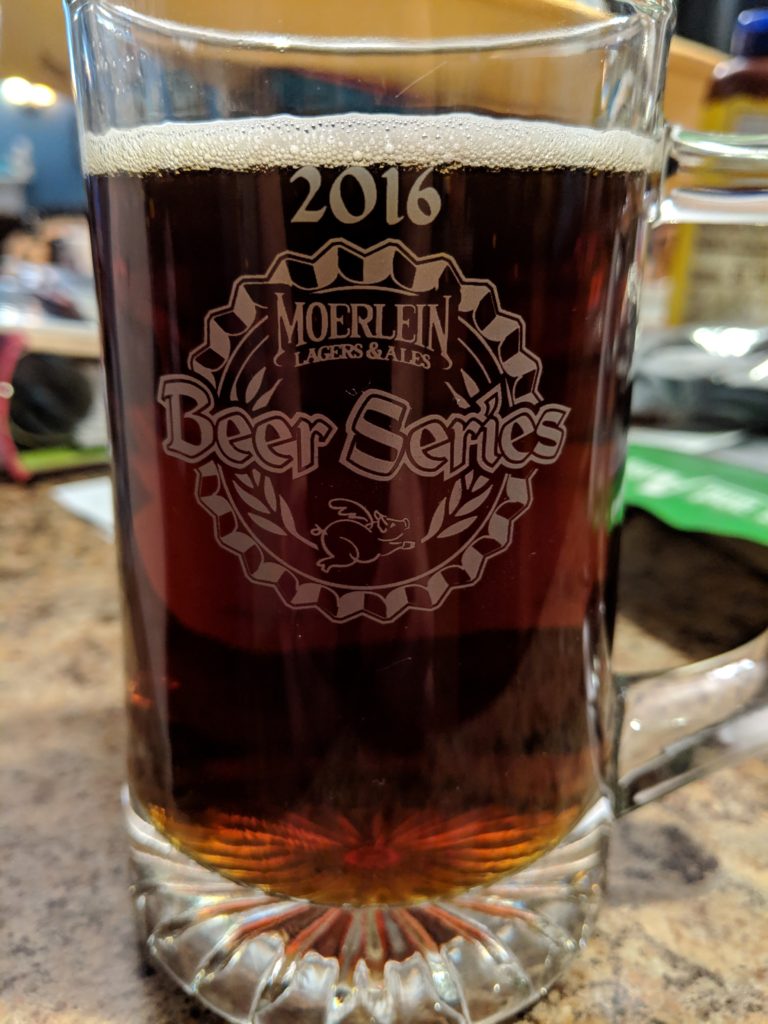
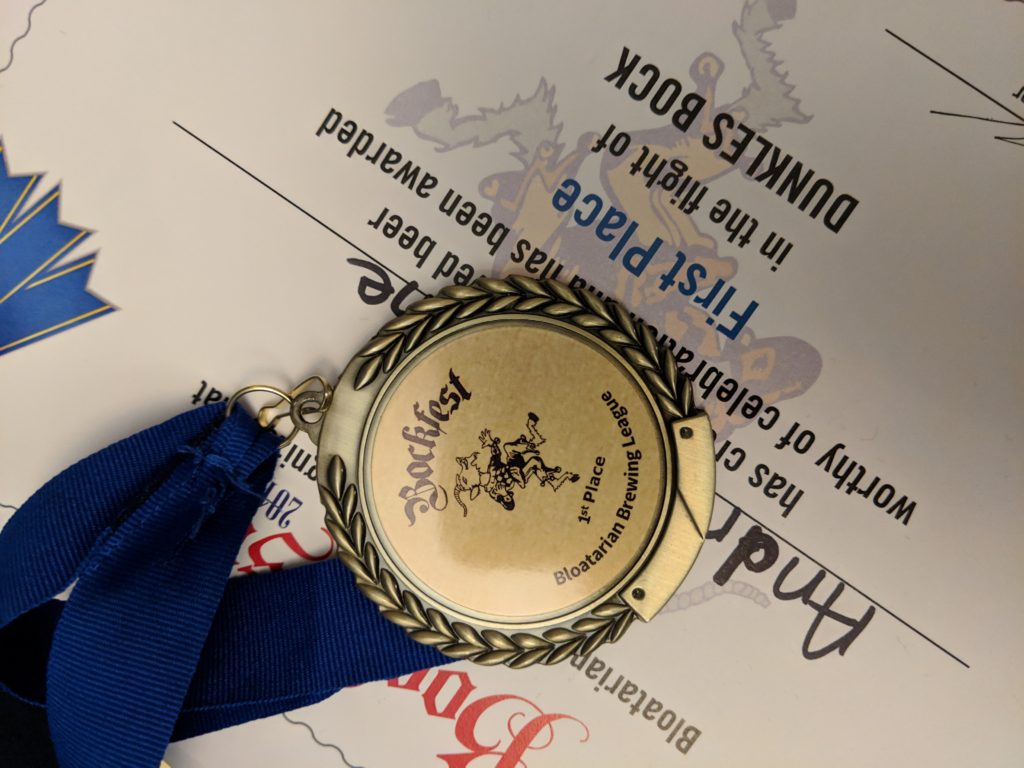
IPA Brewday
This is close to a remake of a previous IPA that I absolutely enjoyed. I’m changing a few things, though- different yeast and no keg hops. Instead of WY Denny’s Favorite, I used Imperial Dry Hop and I used some Citra Cryohops instead of normal Citra. I may have also used less Waimea hops too. This one is not as good as the last one, though.
During the brew day, I overshot my mash temp, starting in the high 150s.
The finishing gravity was way high – like the last time, but higher. I later determined that my mash temp was way too high and likely caused less apparent attenuation (as noted in Zymurgy Nov/Dec 2018 Ask The AHA column, and referenced in the March/April 2019 Dear Zymurgy column.
This isn’t a dumper, though.
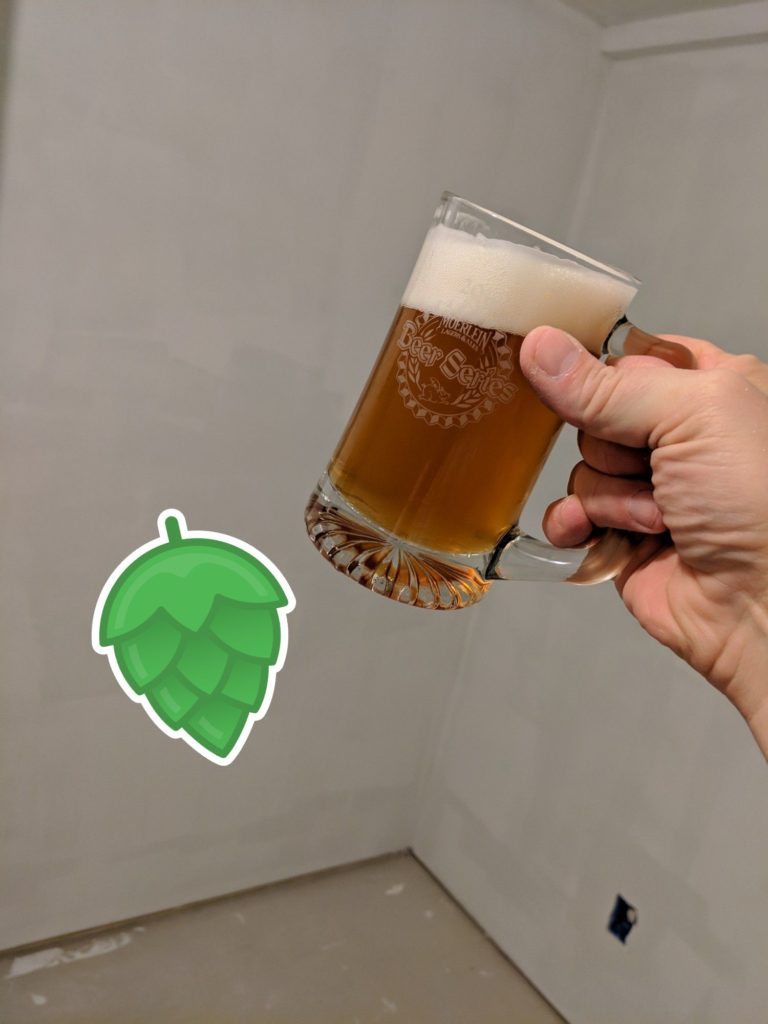
Cheers!
